August #15: Requiem
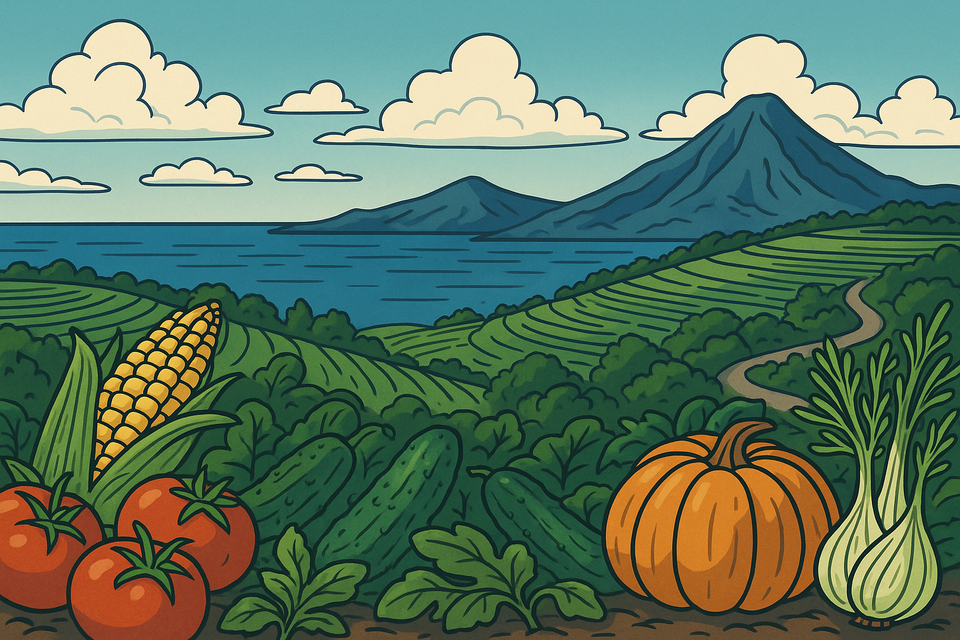
Greetings! From the wonderful island of La Palma. It’s that time of year again when I try to delay and manage the crippling anxiety and approaching seasonal depression by yeeting myself really far away! Just for all burglars thinking about sacking my place, I will probably be there and very aggressive at this time of year.

It’s my first time on this island, just shy of 90 km to the west of my beloved Tenerife, where I spent vacations in the past 4 years. I made assumptions that these islands would be somewhat similar, but there are as many differences as similarities in some areas. What bothers me most about La Palma is the infrastructure, or rather the lack of it. In Tenerife, I am used to highways going all around the island, reducing the travel time significantly. There is no highway in La Palma, and the road conditions are often very unfriendly for car traffic. I am not saying it’s bad, just a different kind of travel. There are a lot of cliff roads and narrow passes, so every drive is a scenic and slow route, because you can’t simply go fast. Even short drives to a place 7 km away can take 30 minutes.

But you will get used to it because of the quality of life you get here. Various fruit grow here like a weed, you can collect fresh avocados and lemons here, figs and mangos just growing by the roadside. In Tenerife, everything is locked behind the walls of fincas.
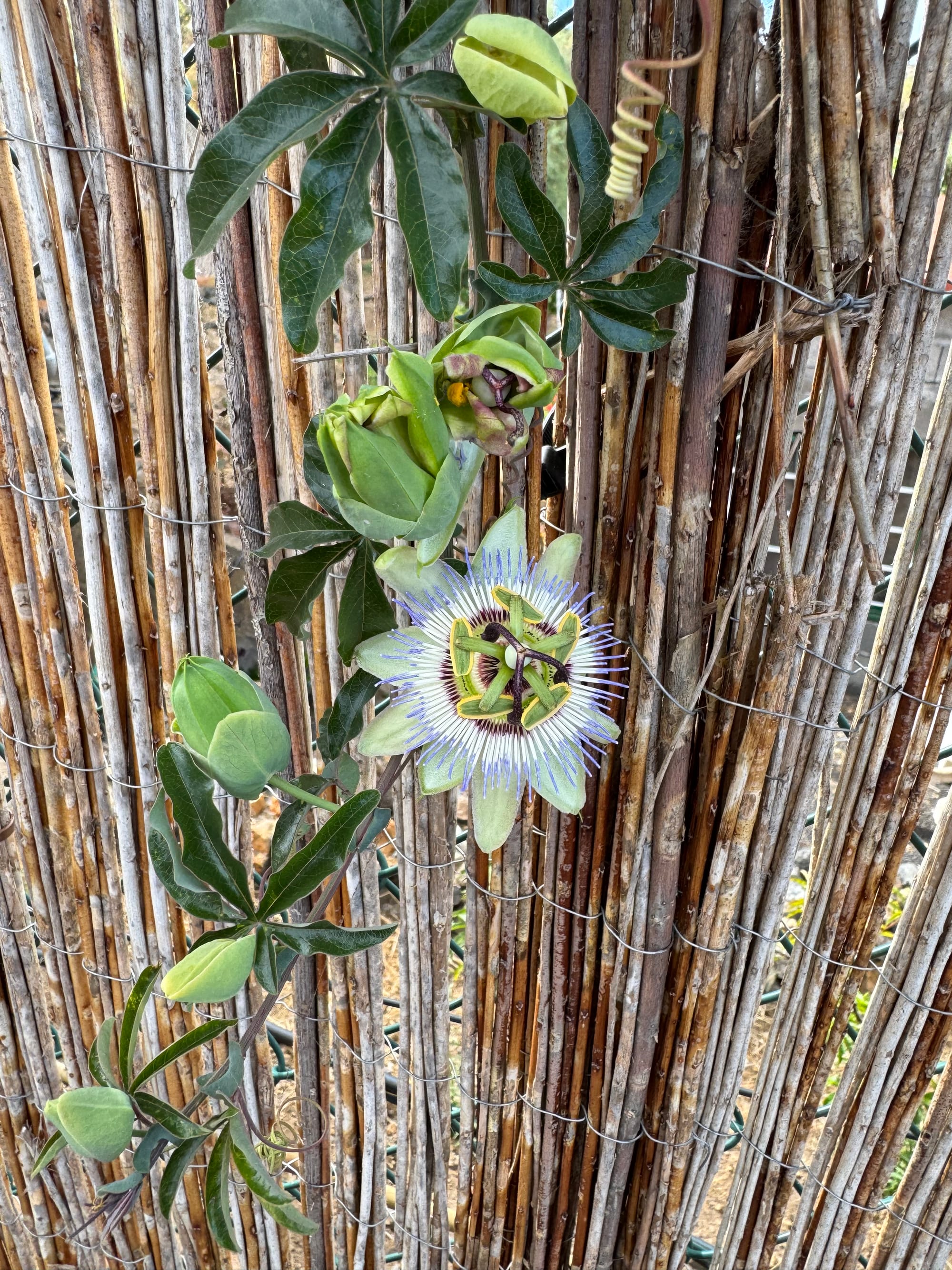
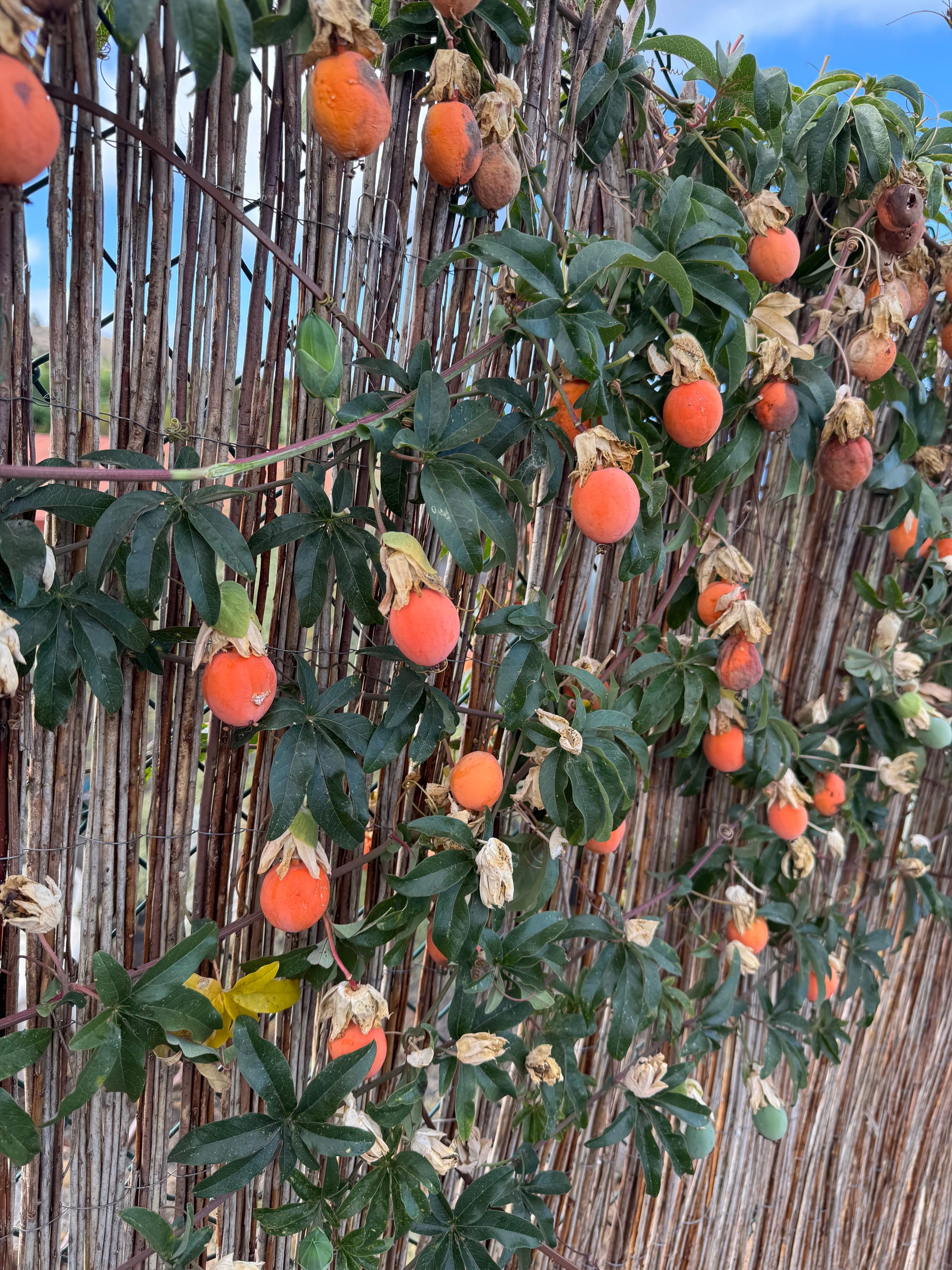
Wild passion flower. You can't even get this fruit in Czechia.
Also, the tourism here is almost non-existent, for good and bad. I see a lot of Germans here, not only visiting but living here as well. There is no designated tourist spot like in Tenerife or Gran Canaria. Sure, you get some hotels, but not a huge complex for something like ten thousand people. However, less tourism means probably less money for the public projects and stuff. I can’t say for sure now, since it’s my first time here, but it makes me realize what stuff I really like and dislike about Tenerife, maybe I will write about it even though no one asks for it.

Well, never mind the La Palma, before I left for a good part of the month, I totally did something in my garden, especially in the experimental field. I lost yet another branch full of apples, and harvested so many tomatoes that I will have to re-evaluate the approach next year, because I’ve already expanded the real estate for more. Let’s dive in.
the italian situation
And we head straight into the tomatoes! August is always a prime time, the absolute peak of tomato production. All that time and effort start paying off. And oh boy, does it pay for itself.
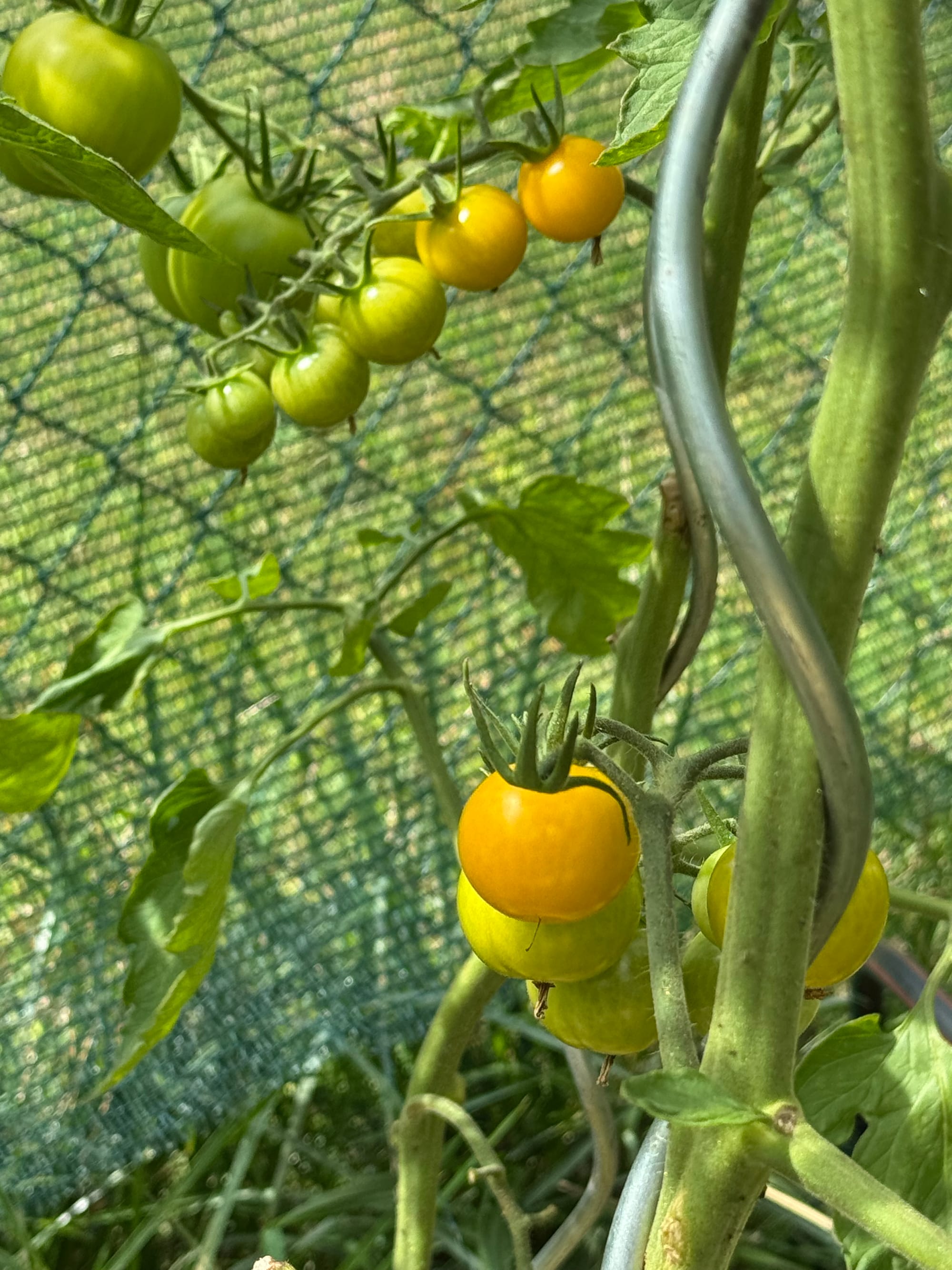
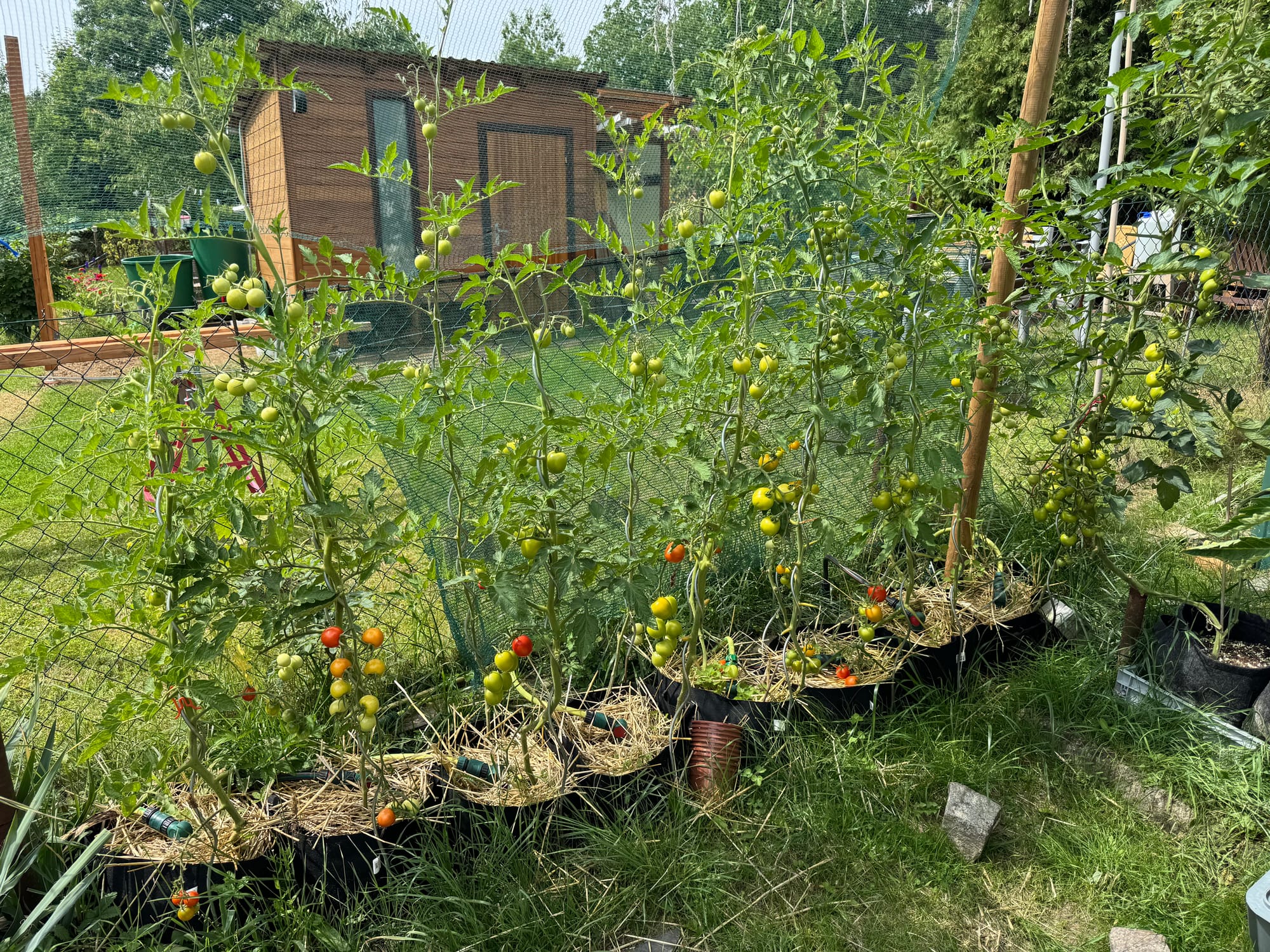
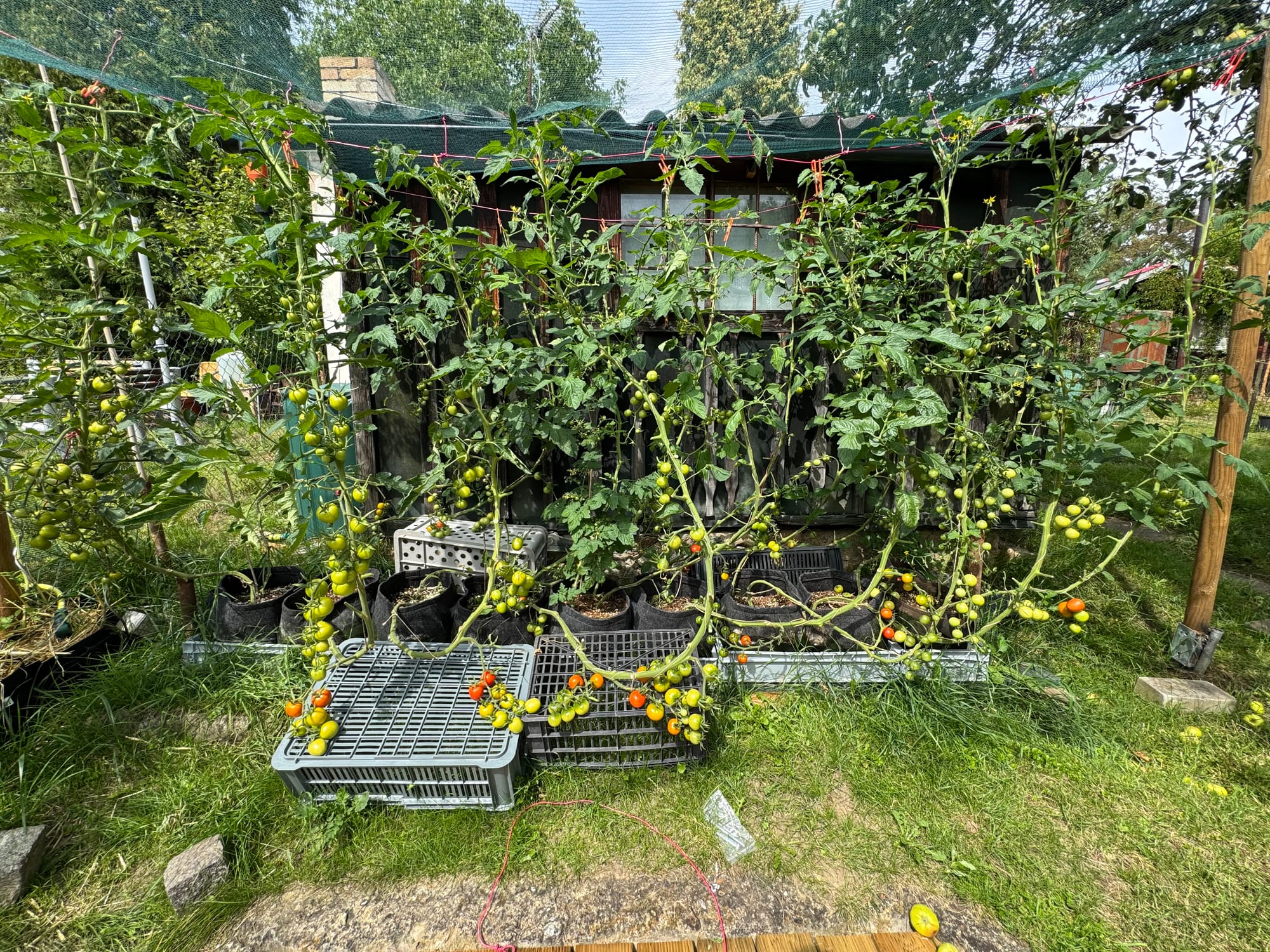

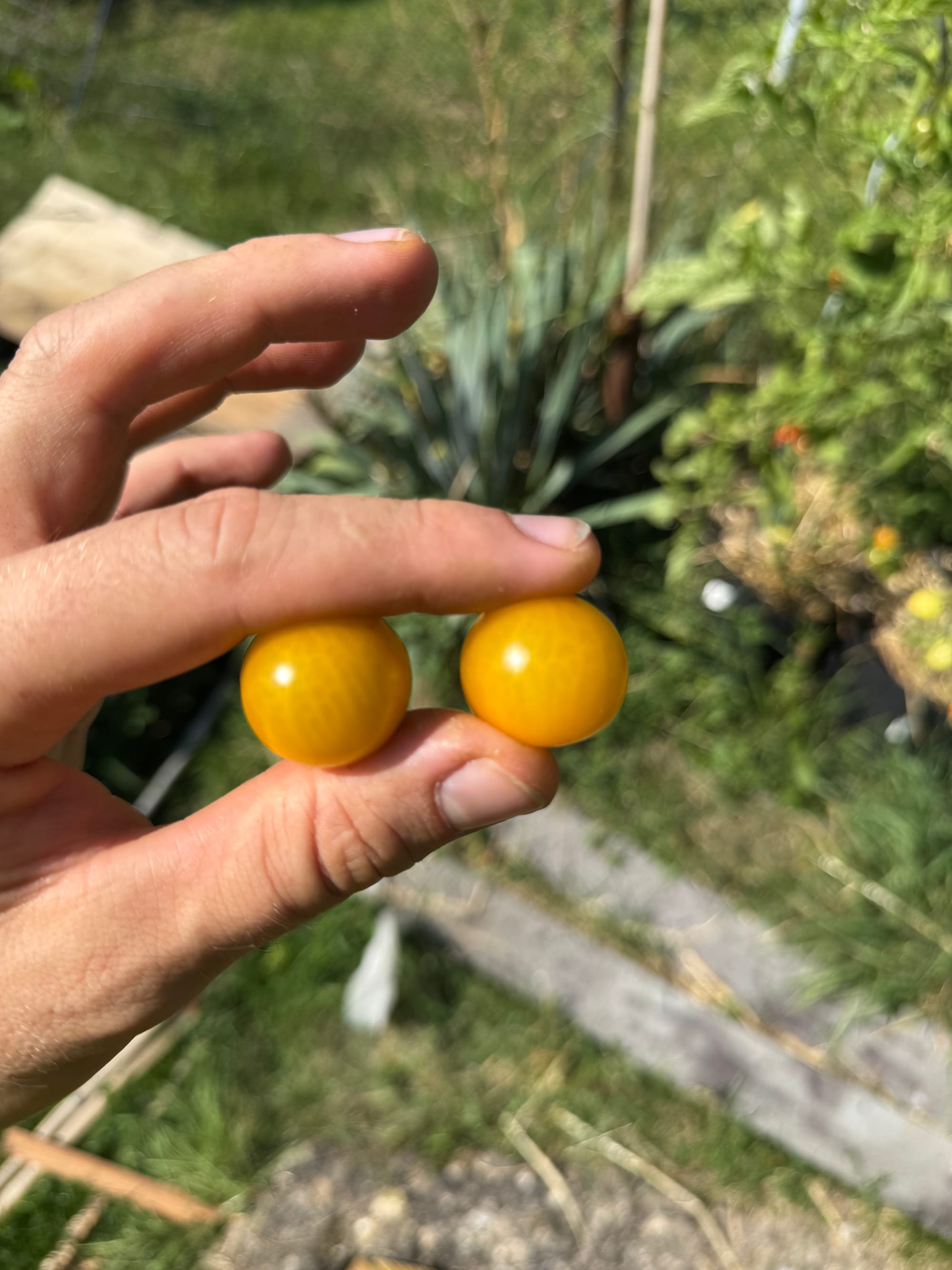
The hydroponic tomatoes are absolutely taking over the plants they are growing on. Everything is so heavy, and red, and so delicious. But no matter how hard I tried, I was not able to eat two kilos of tomatoes every three days. I give a lot to my family, but at the end of the day, there is still so much in the produce basket.


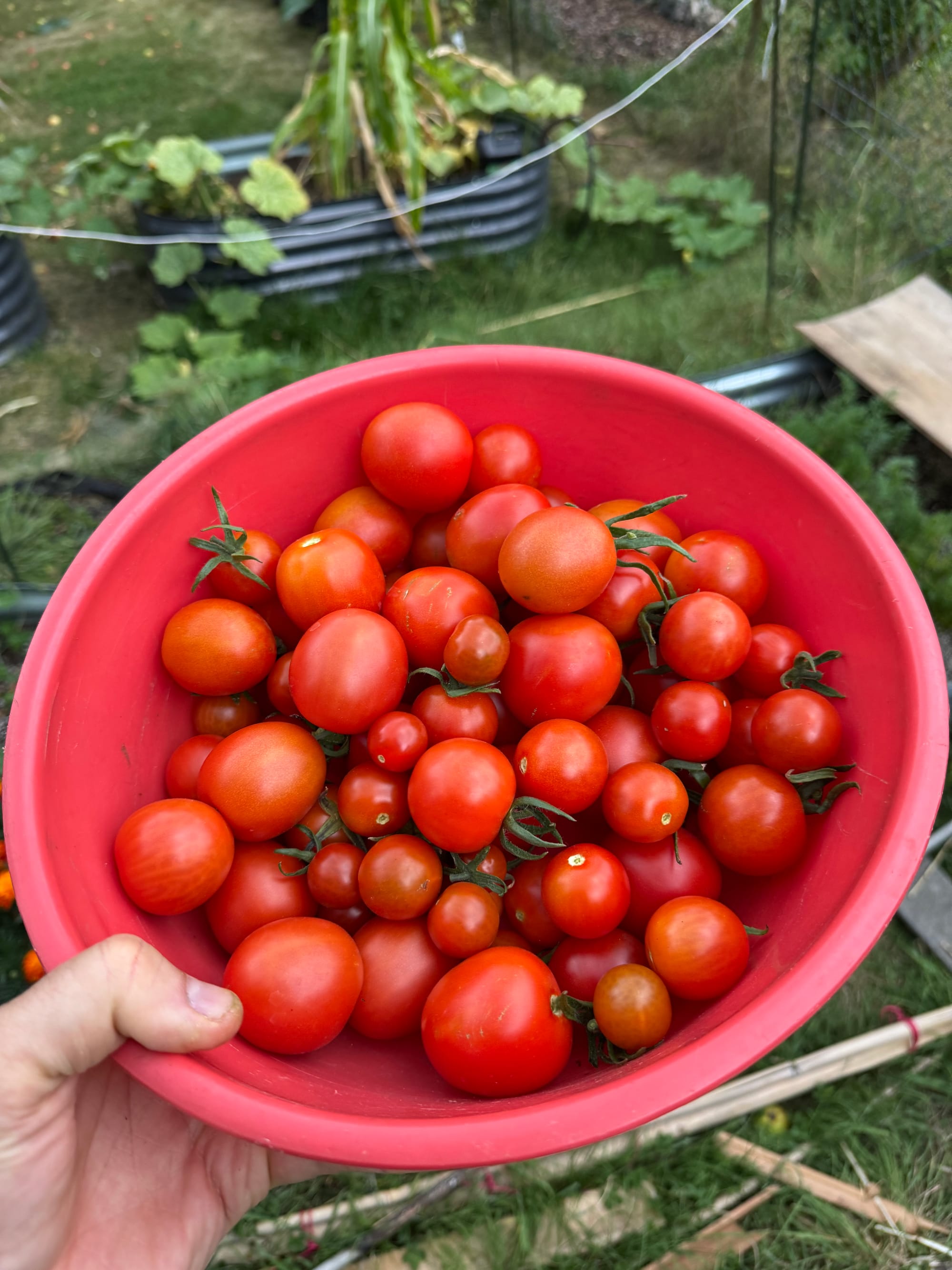
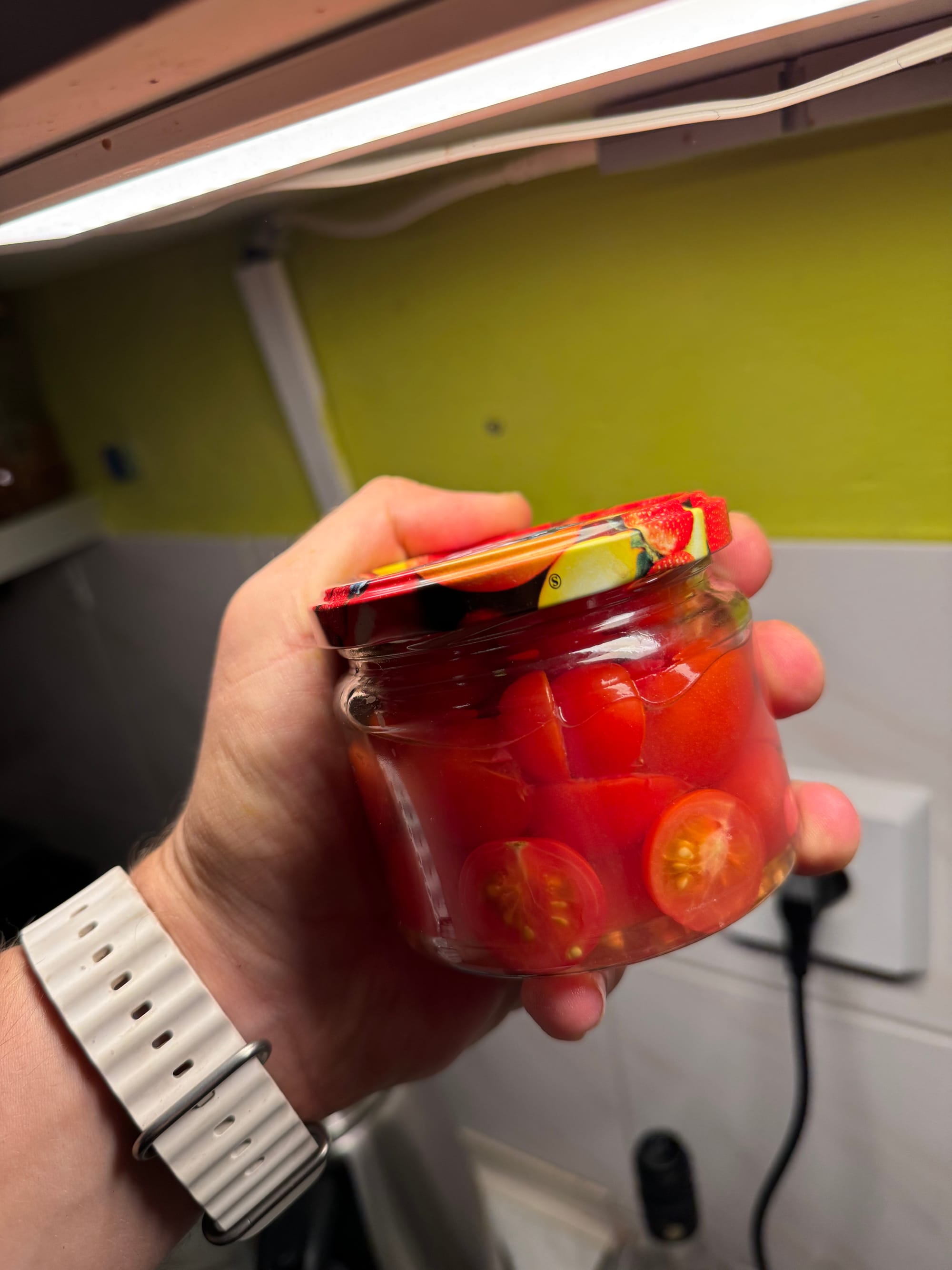
I canned and processed a lot of them. Even on the day of my departure, I filled two jars because I was unable to eat them the night before. The cupboard is full of canned cherries, jams, and now, tomatoes in various consistencies. I pressed them, chopped them, or just showed them into the jar and boiled the living soul out of them for those delicious sauces in the middle of January. Because in the end, they have to keep me running only for a few months until the winter harvest. Speaking about the winter harvest of Micro-Tom tomatoes, I harvested yet another successful year of windowsill tomatoes with a pretty standard harvest at the end.
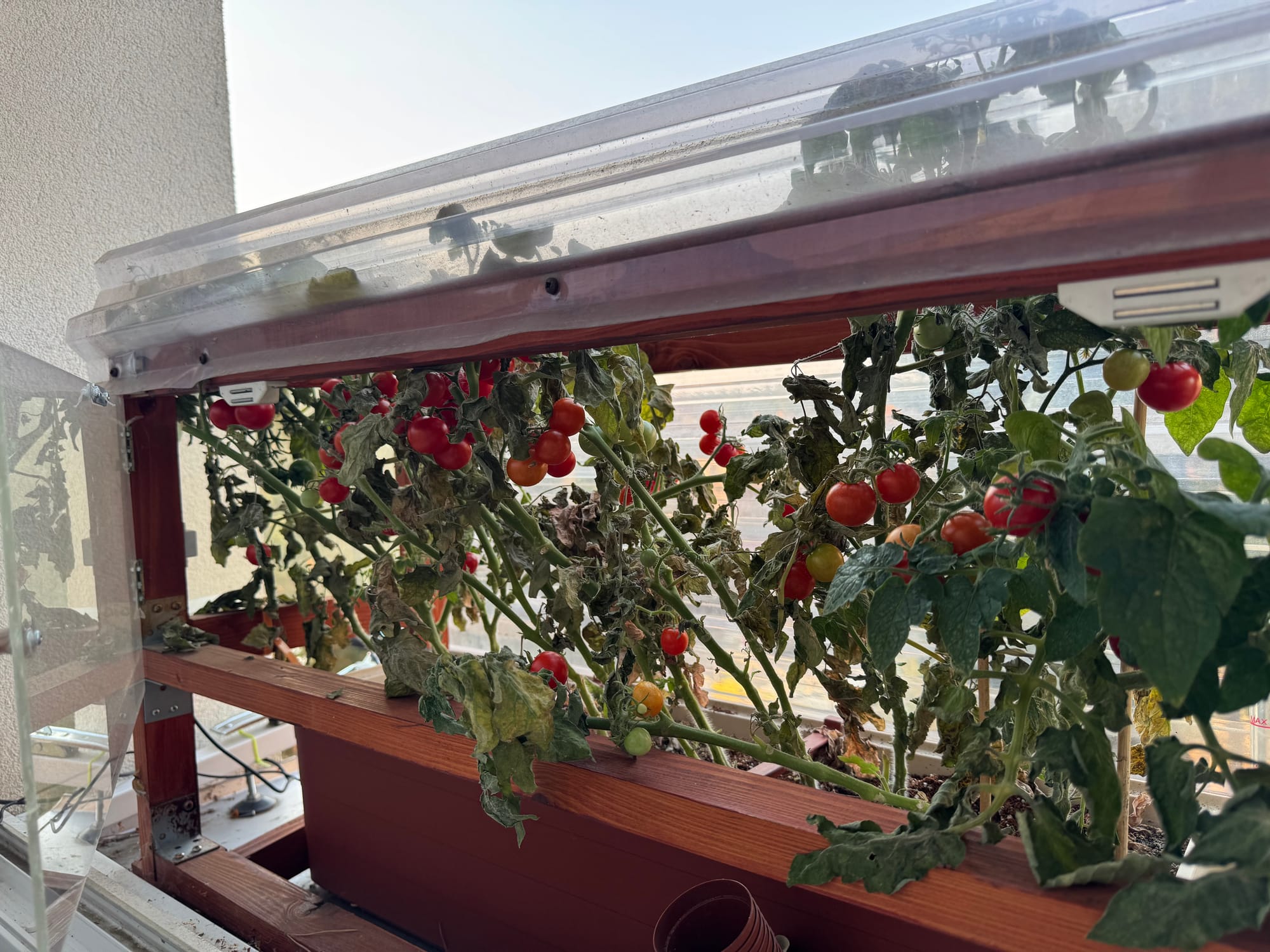
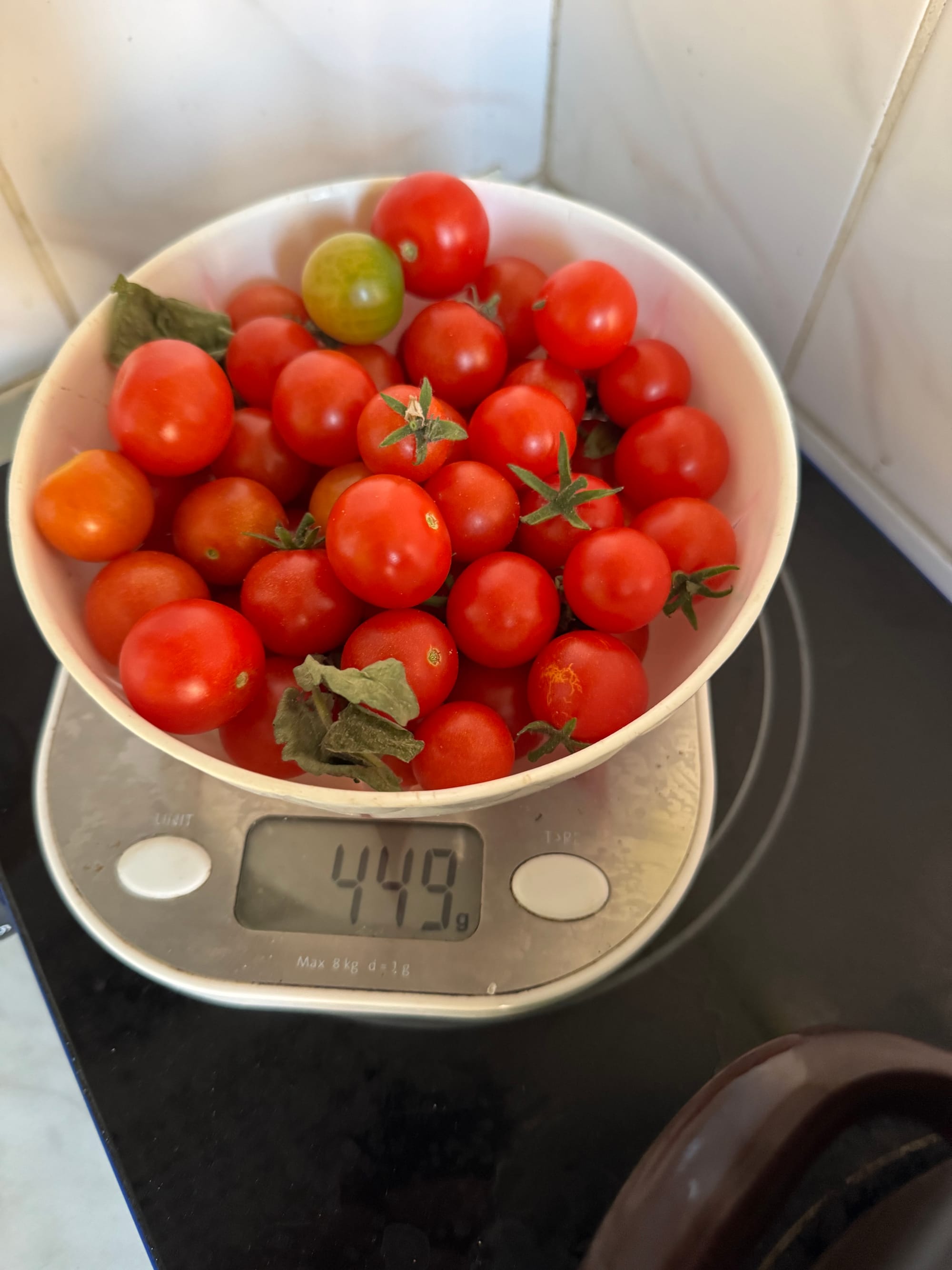
A little bit of water stress can make them ripe faster. But only at the end of the lifespan.
This year, I didn’t save any seeds, because the plants are getting out of hand. I will use some older seeds, something I saved two or even three years ago, because I want back my compact little plants. Not a different shade of Red Robin.
the cornypepper finale
I sow the corn in spring mostly as a stupid experiment. It’s the first year of the new raised bed setup, which is always a gamble. I’ve filled the bottom with some organic junk, half-rotten apples, and wood, and filled the top with some cheap topsoil and compost. In my experience, this approach is good enough for some plants, but it often leads to some nutrient deficiencies and competition, because the soil is just not alive enough yet. A lot of organic matter is competing with plants for nitrogen. God knows where the topsoil comes from, and there is simply no history in the soil for it to be productive. That’s why I am kind of surprised the corn is doing so well. And even the pair of winter squash picked up and spawned one or two fruit.
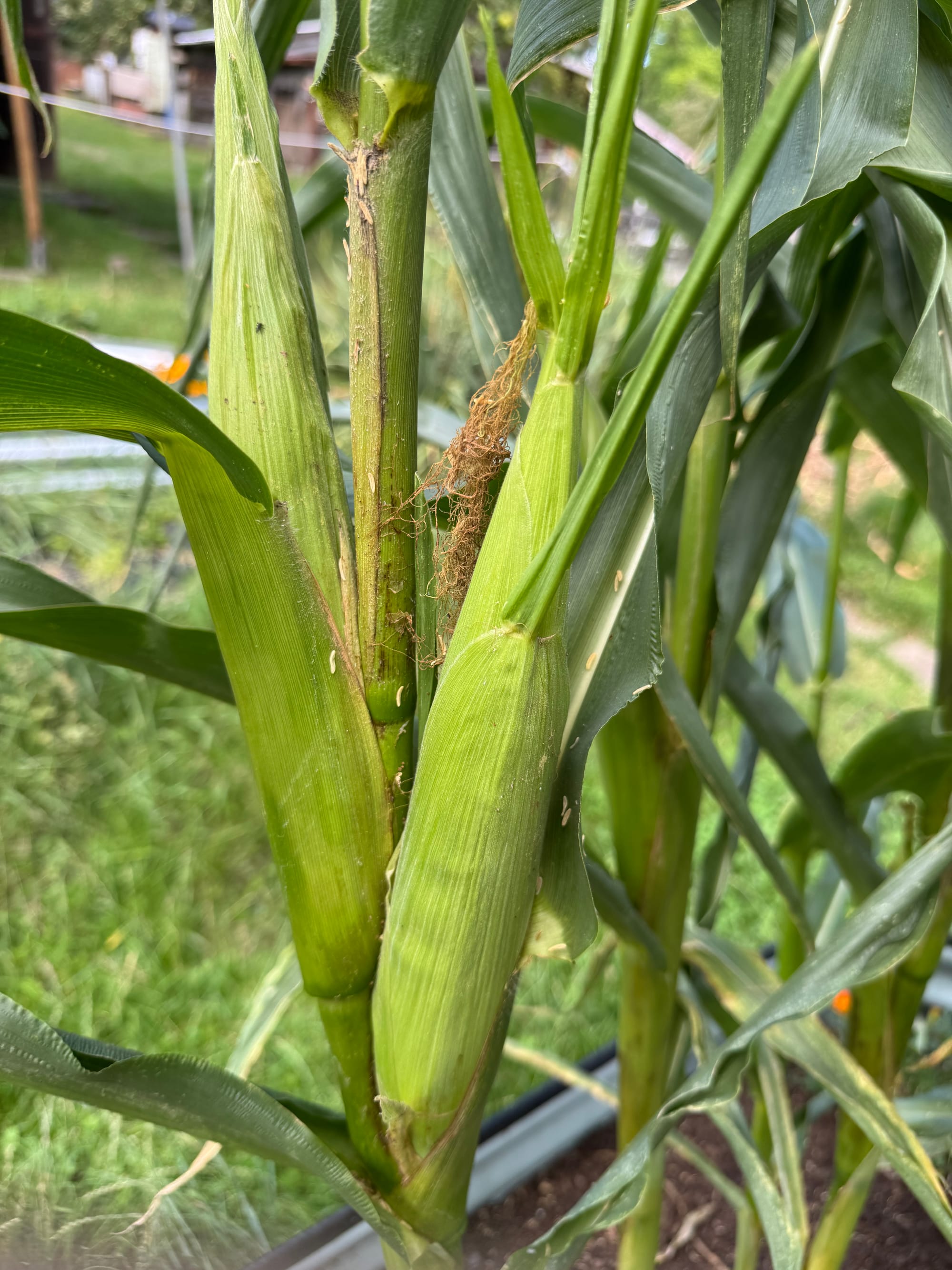
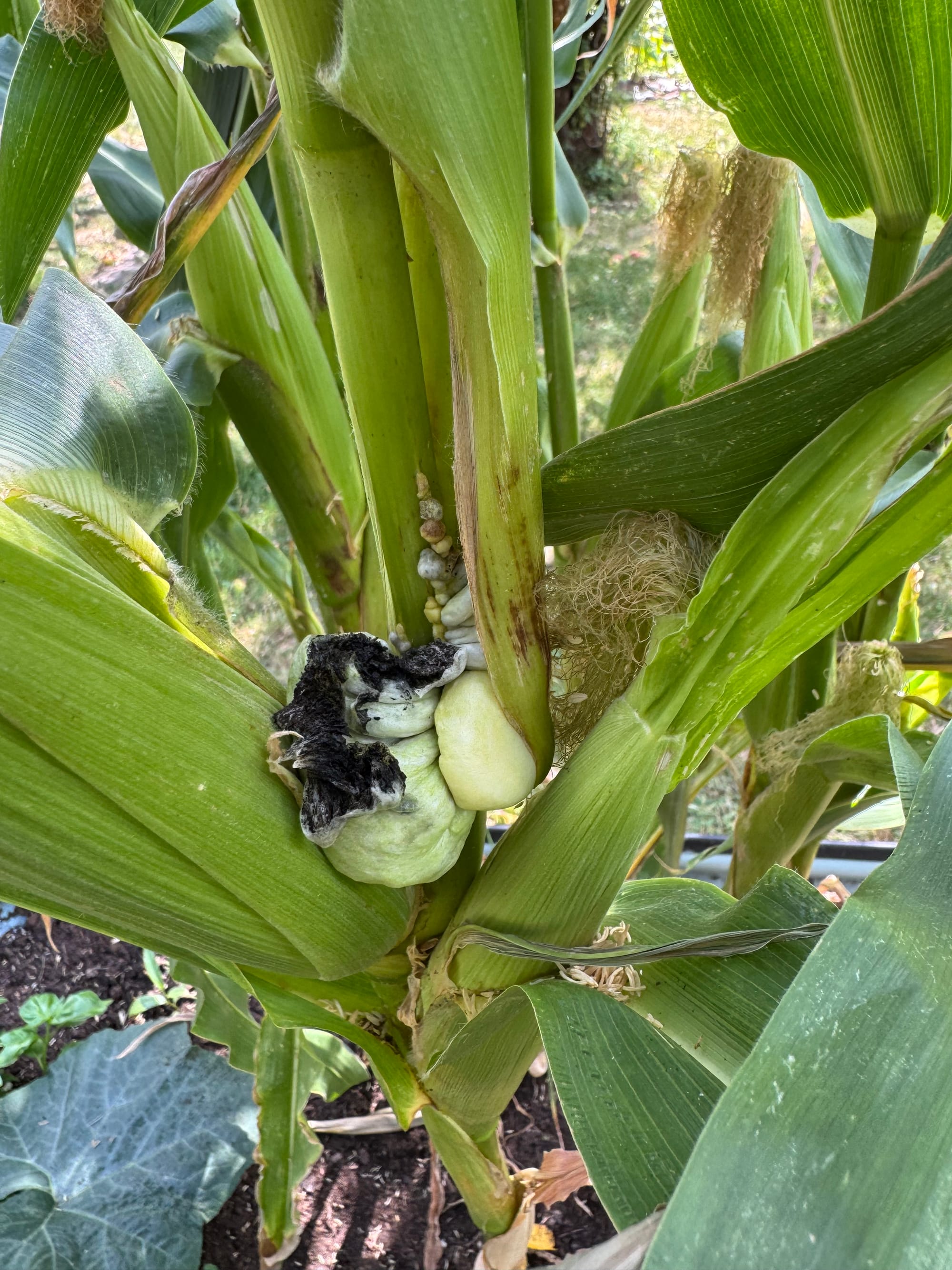




I got some funghi that supposed to be a delicacy. Totally threw it out.
The peppers, victims of my incompetence, actually recovered nicely. But the outcome is actually double-edged. I managed to fix the vast majority of affected plants. New growth is very lush and shows no deficiency; the pH is now healthy 6.8. But I was not able to fix the affected plants without affecting the healthy plants. The Cayenne got poisoned by the mix rich in magnesium and calcium, locking out the manganese and some iron. I expected that, and I don’t really mind since it’s already ripening.



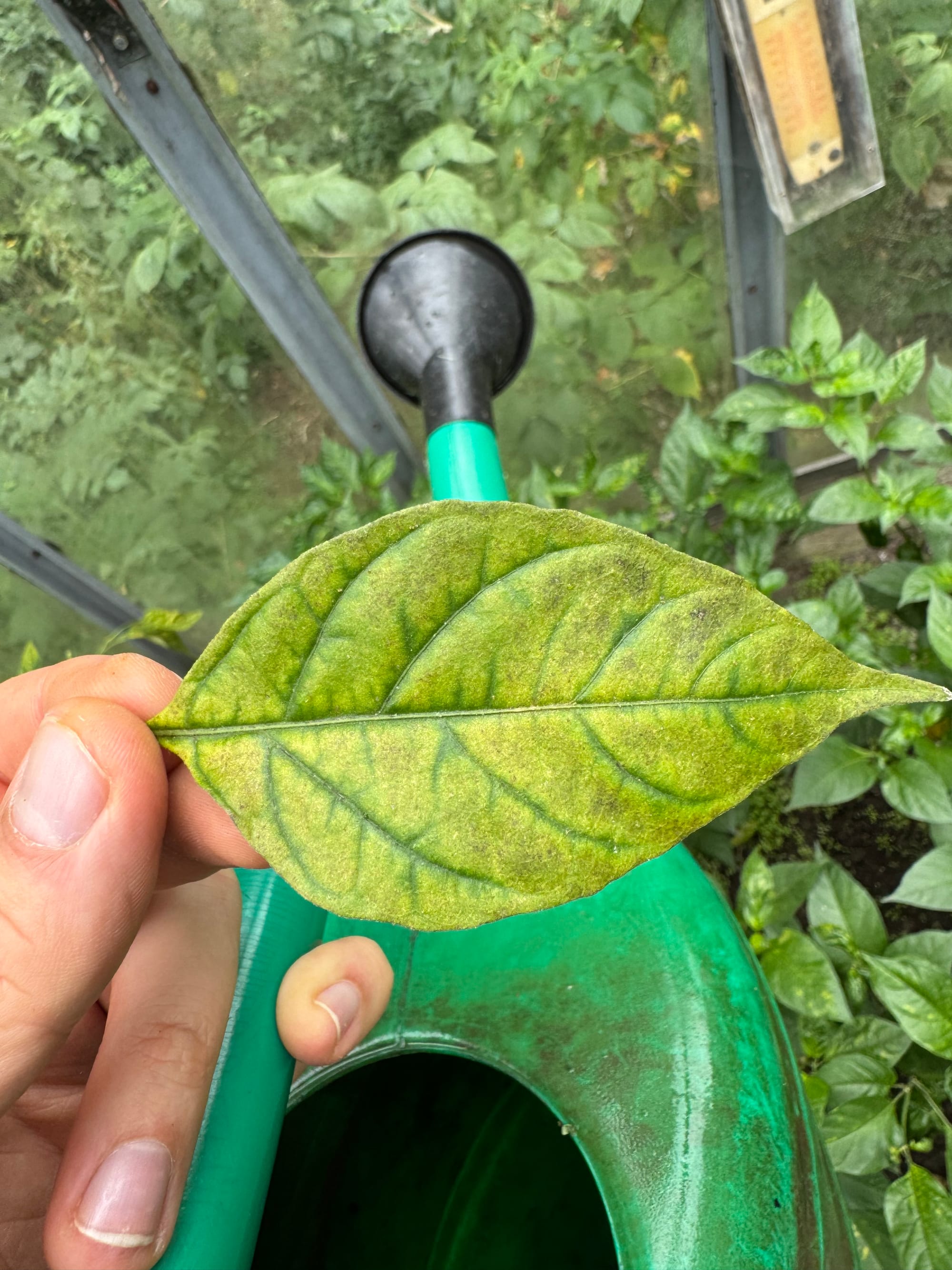
My main goal was to fix and keep as many Habanero plants as possible, and I was quite successful, I would say. Not a single plant died, showed only some minor symptoms, and now I am getting some nice fruit I need for my annual batch of my signature mango sauce.
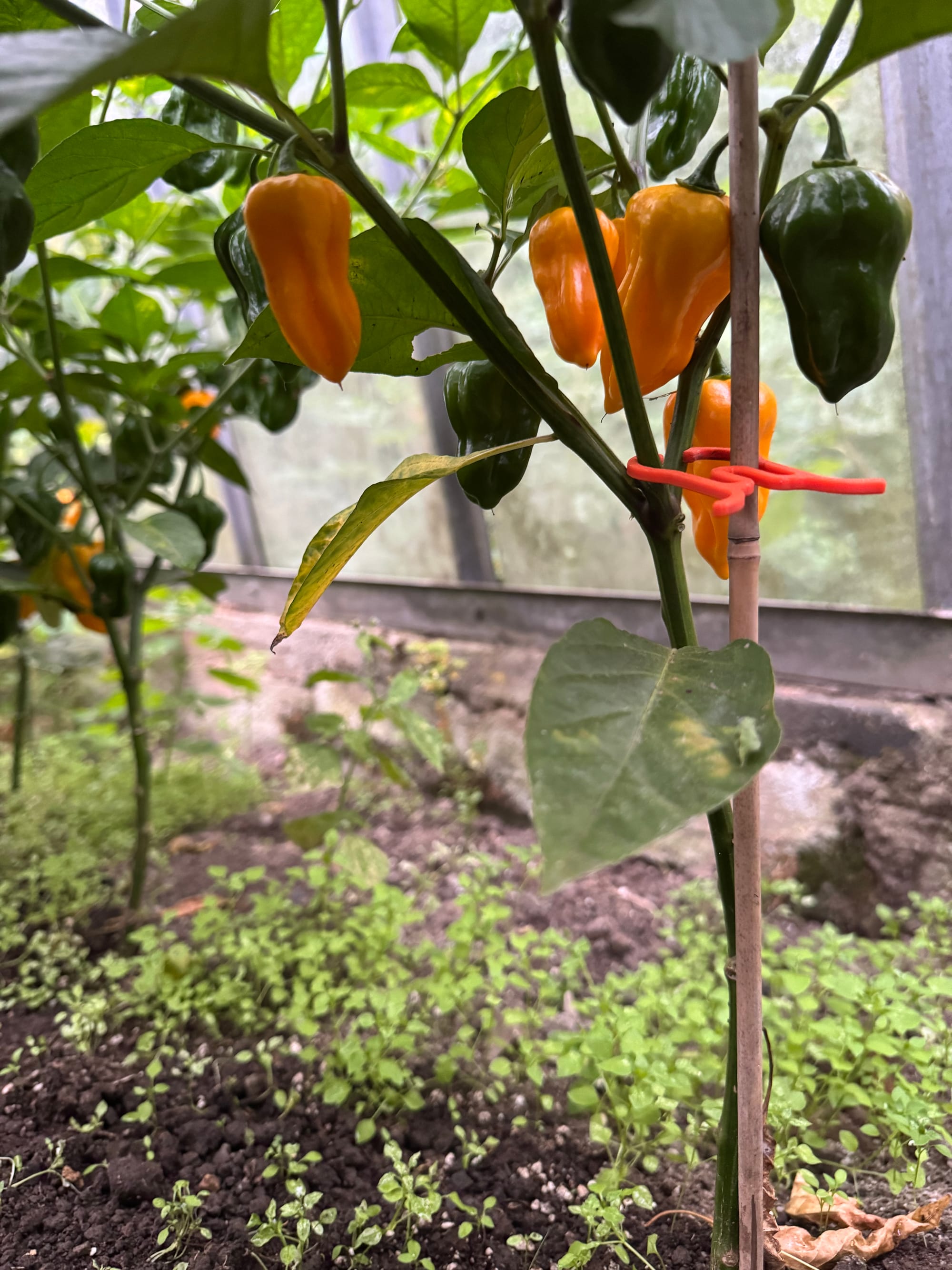
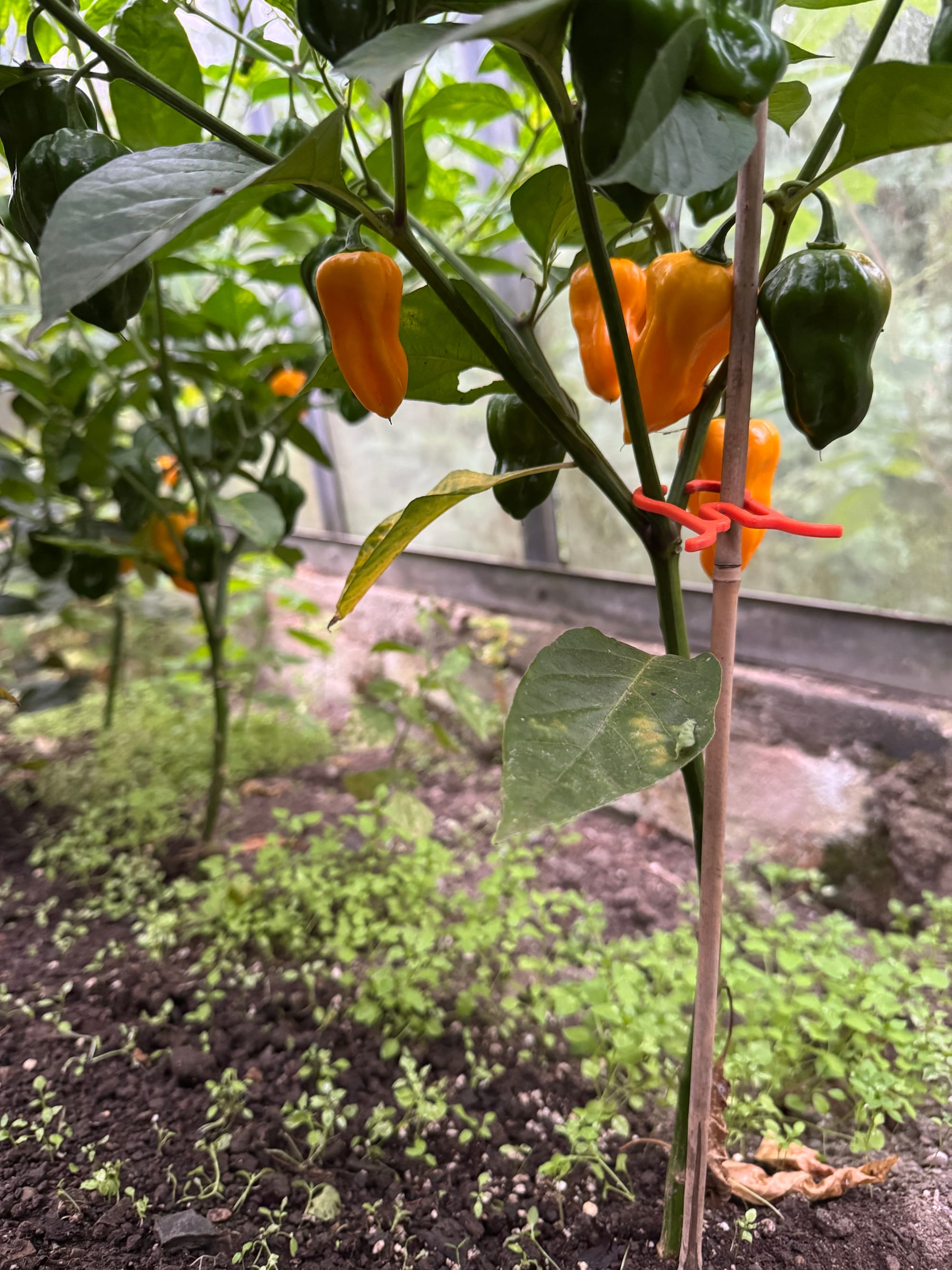
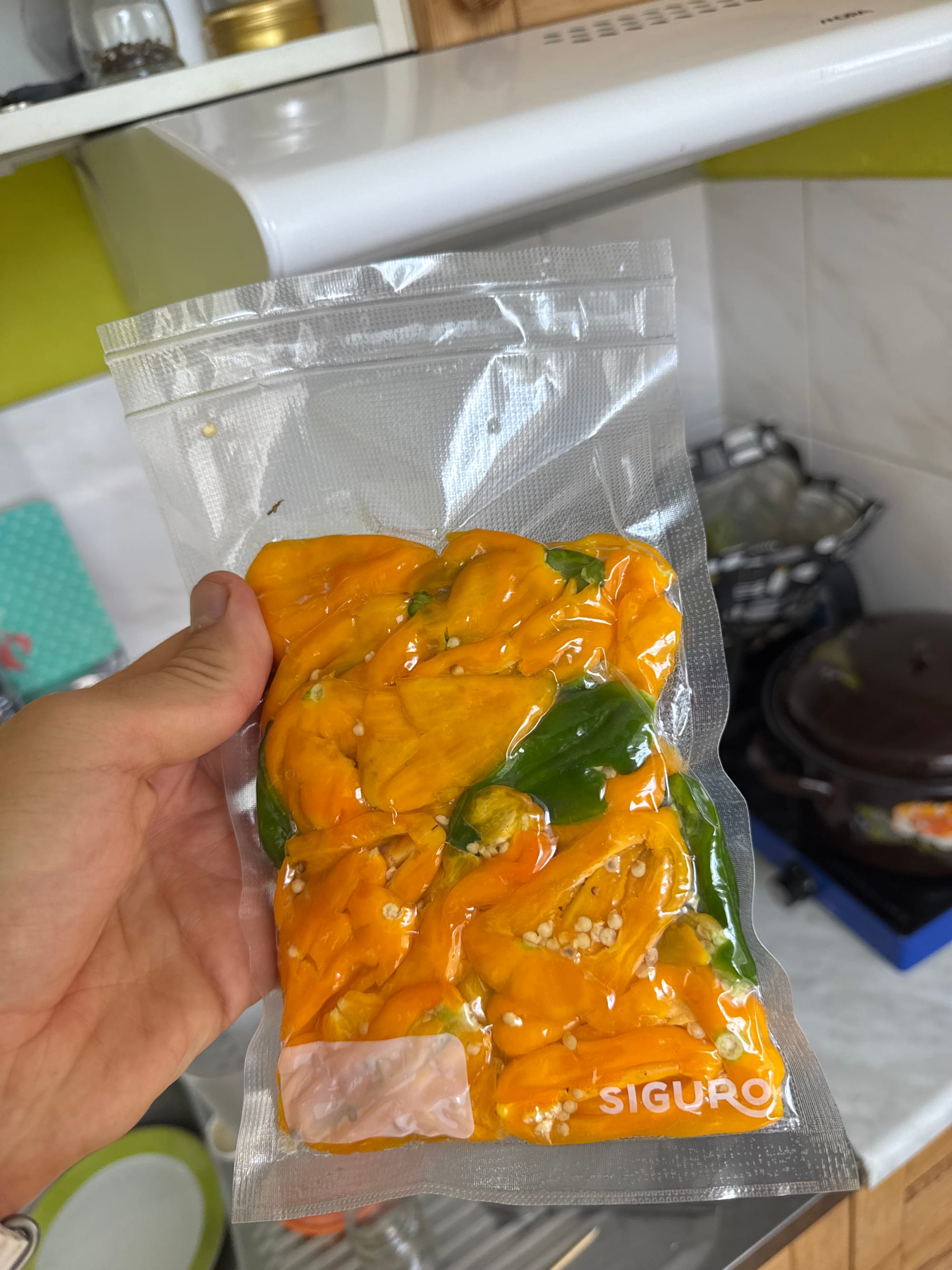
I actually have some peppers, aging and fermenting, from last year. I want to use them for a special “reserva” batch of the sauce. If they are still ok and edible, though. Otherwise, it’s going to be food poisoning.

the cucurbitacin warfare
And now the report from the battlefield. Cucumbers! I will talk cucumbers because that’s the plot device for the last part of the season. I moved my slicing cucumbers out. I have removed the half-dead melons, because there is no reason to keep them alive at this point, and set up three euro boxes for a Kratky setup. Two oxy-Kratky style and one regular Kratky one. Later, I removed the oldest cucumber plant and repurposed the box for another plant, leaving me with two regular Kratky.
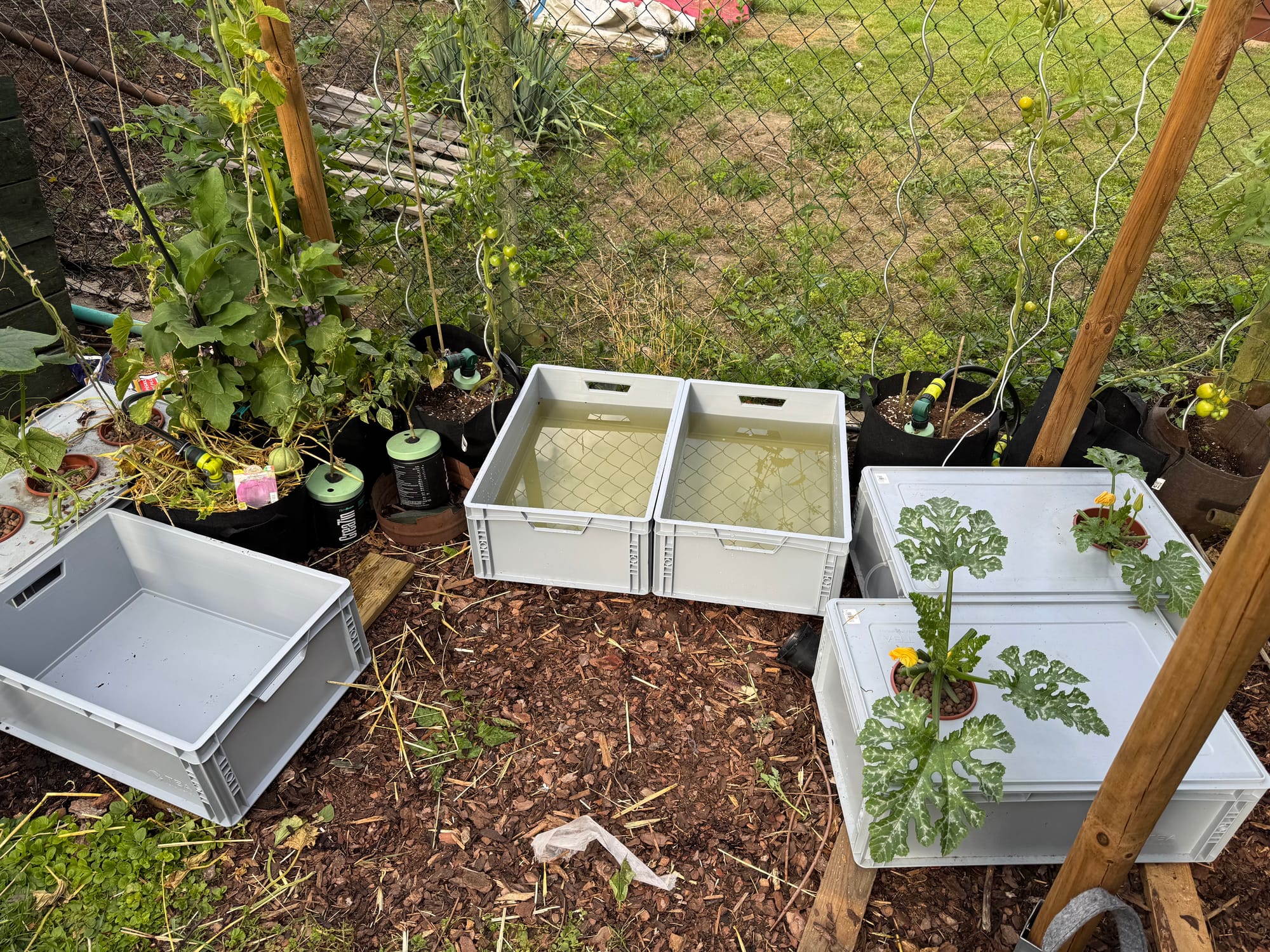
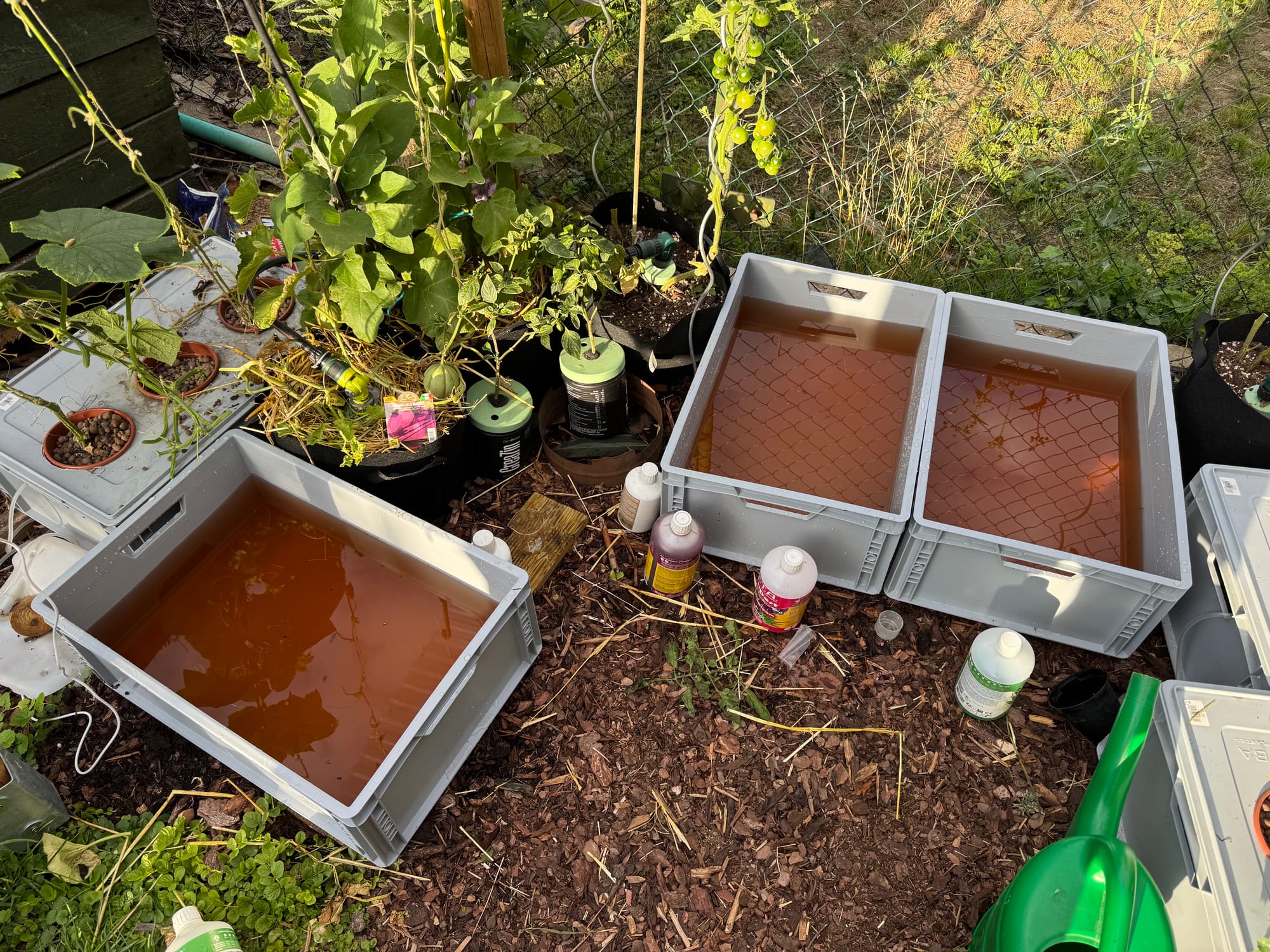

And because I was feeling like middle-fingering the nature even more, I got two buckets for two more plants in the foil house.

Almost immediately, I could spot the difference between oxy-Kratky and regular Kratky. The aerated ones, as expected, have larger leaves and a thicker stem. They also have a smaller root zone and fewer roots in general. Maybe because they can do more with less, thanks to the oxygen? It could even out later, who knows.
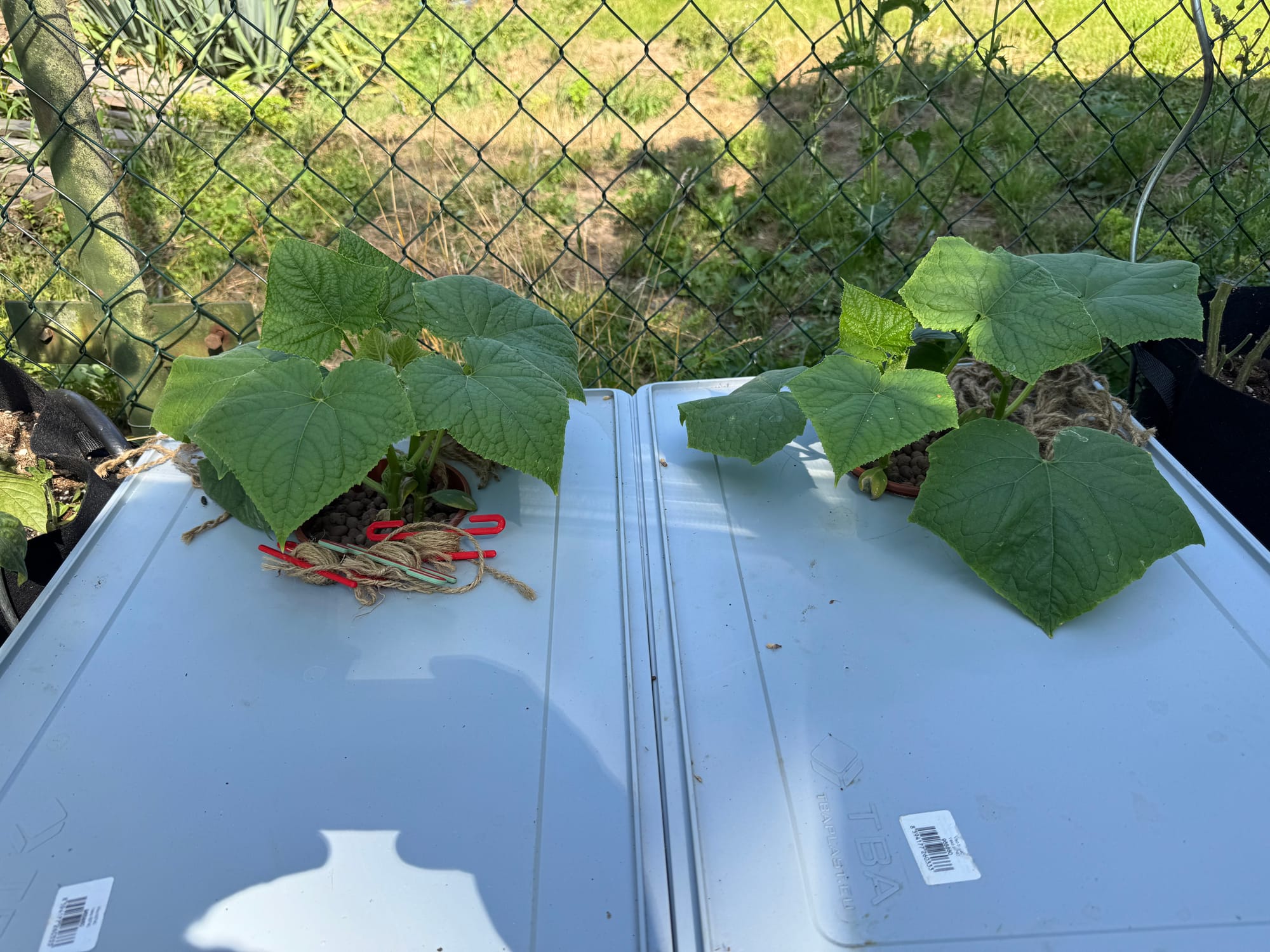
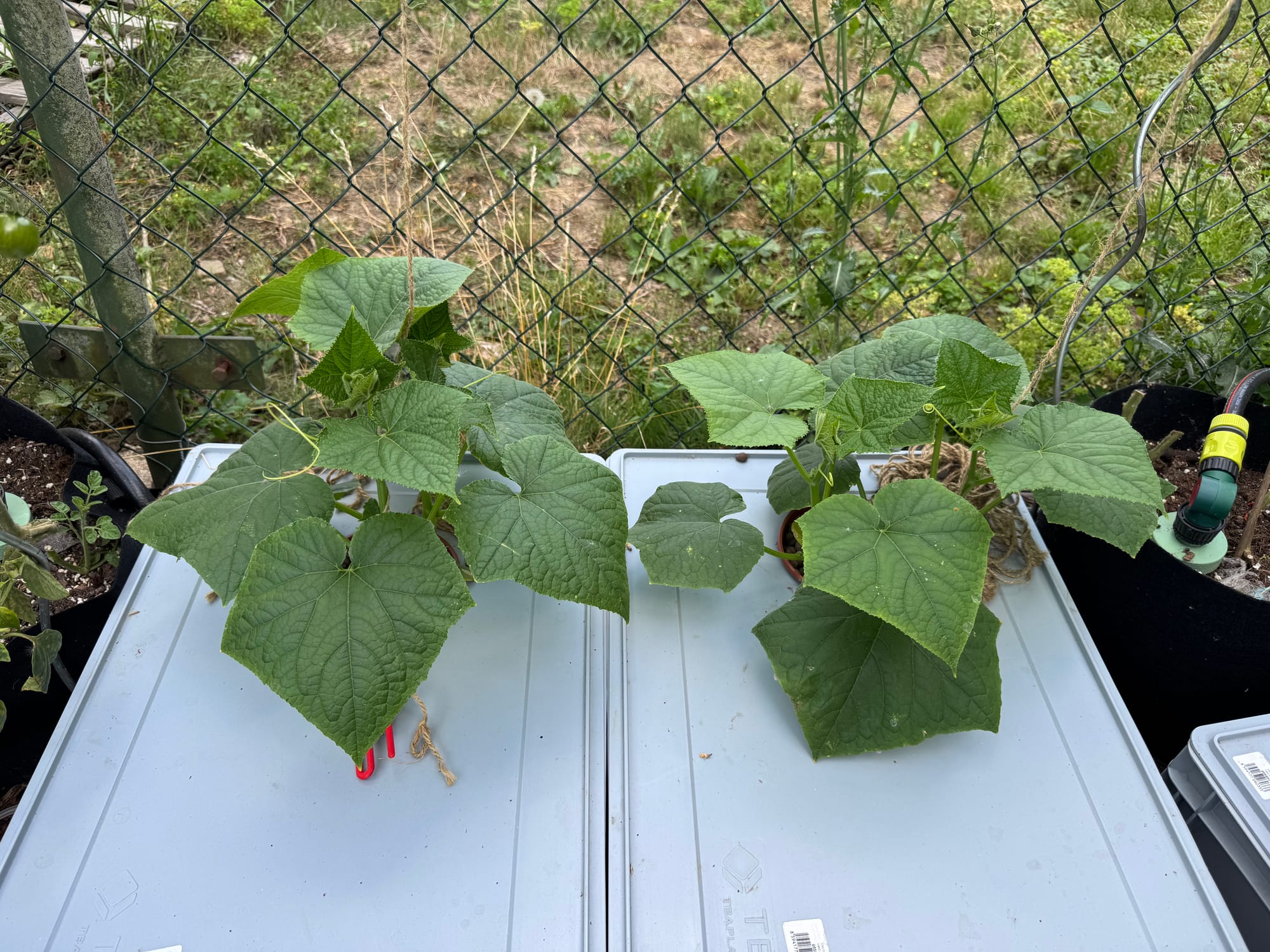
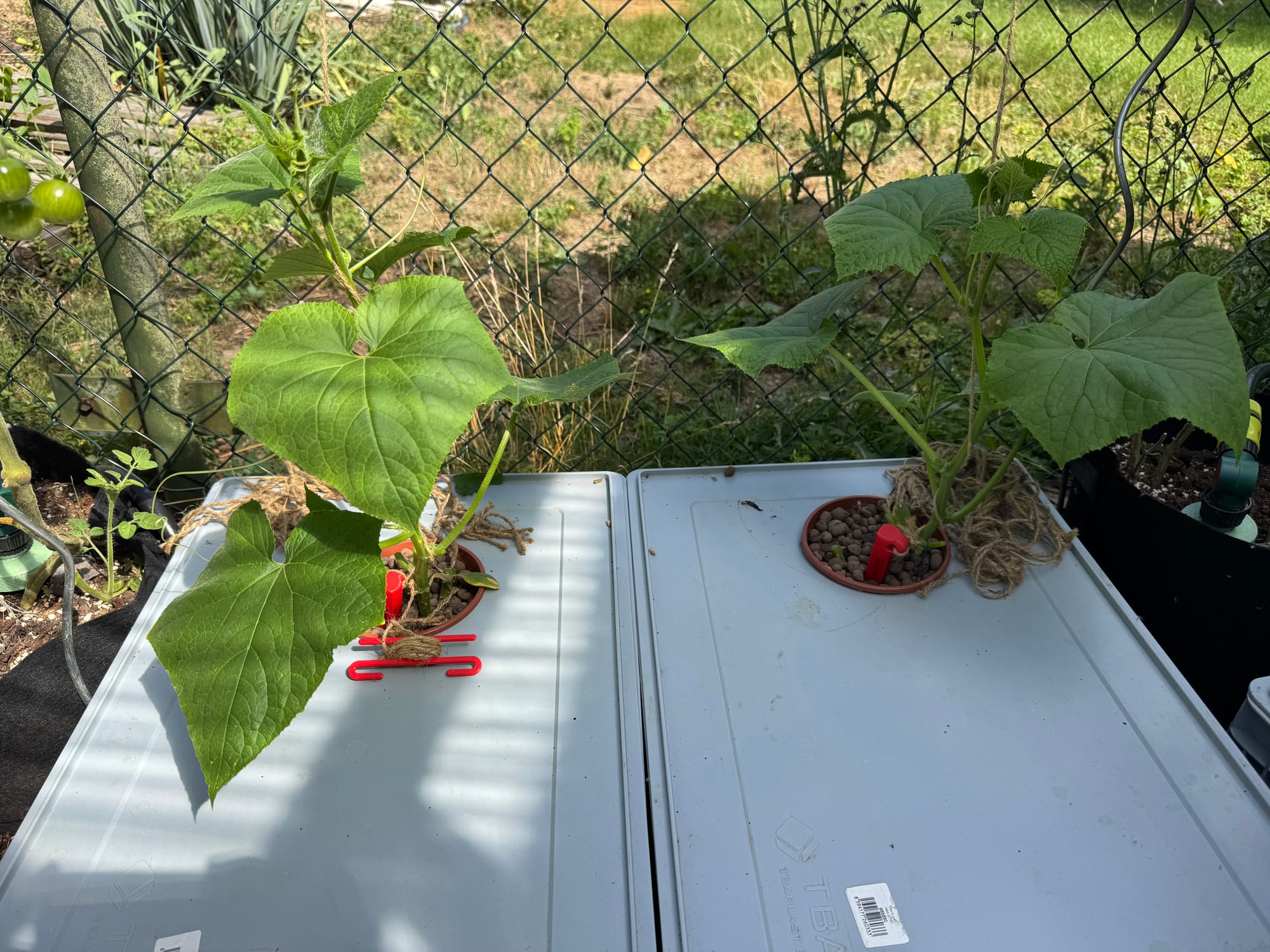

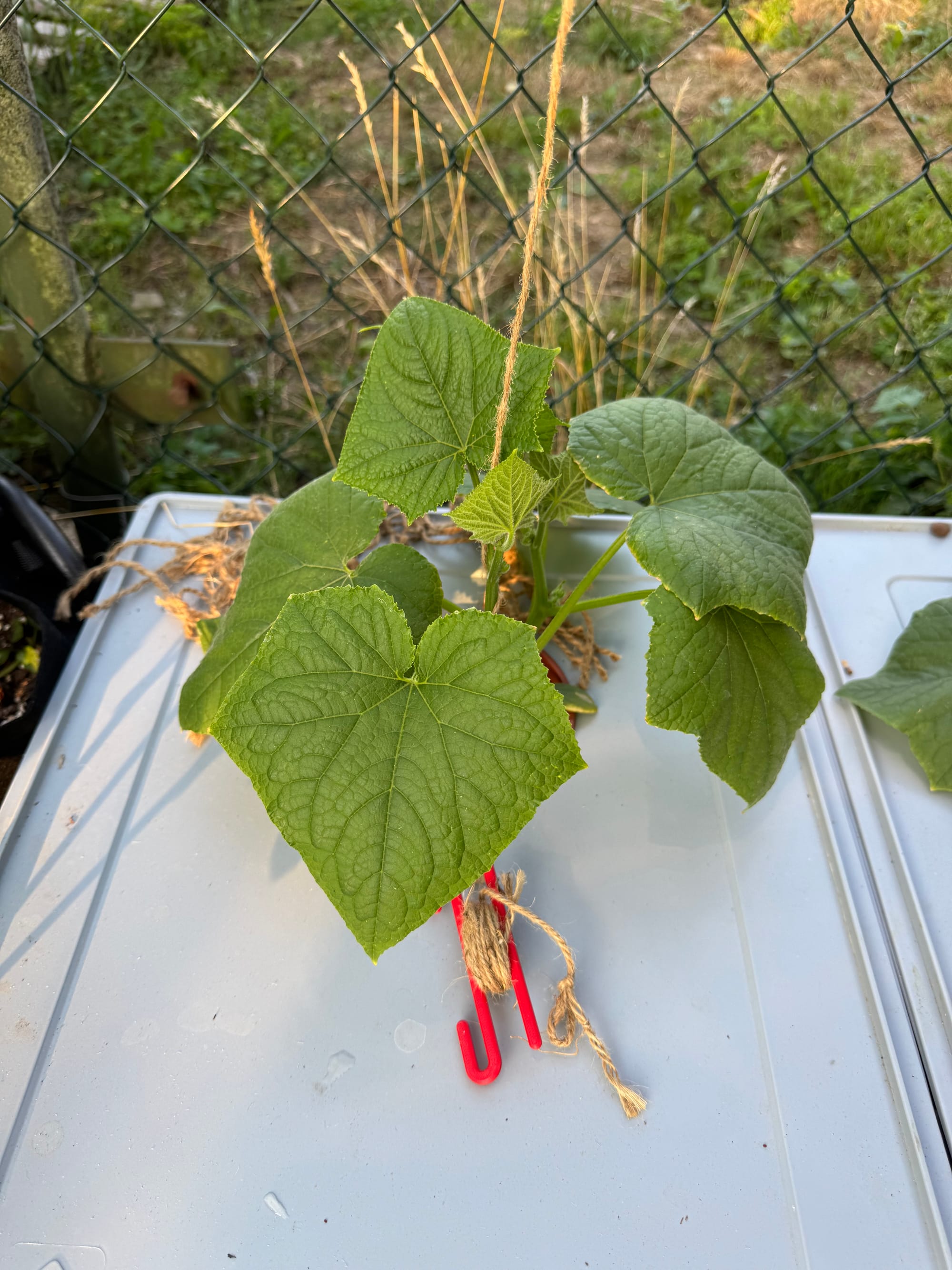
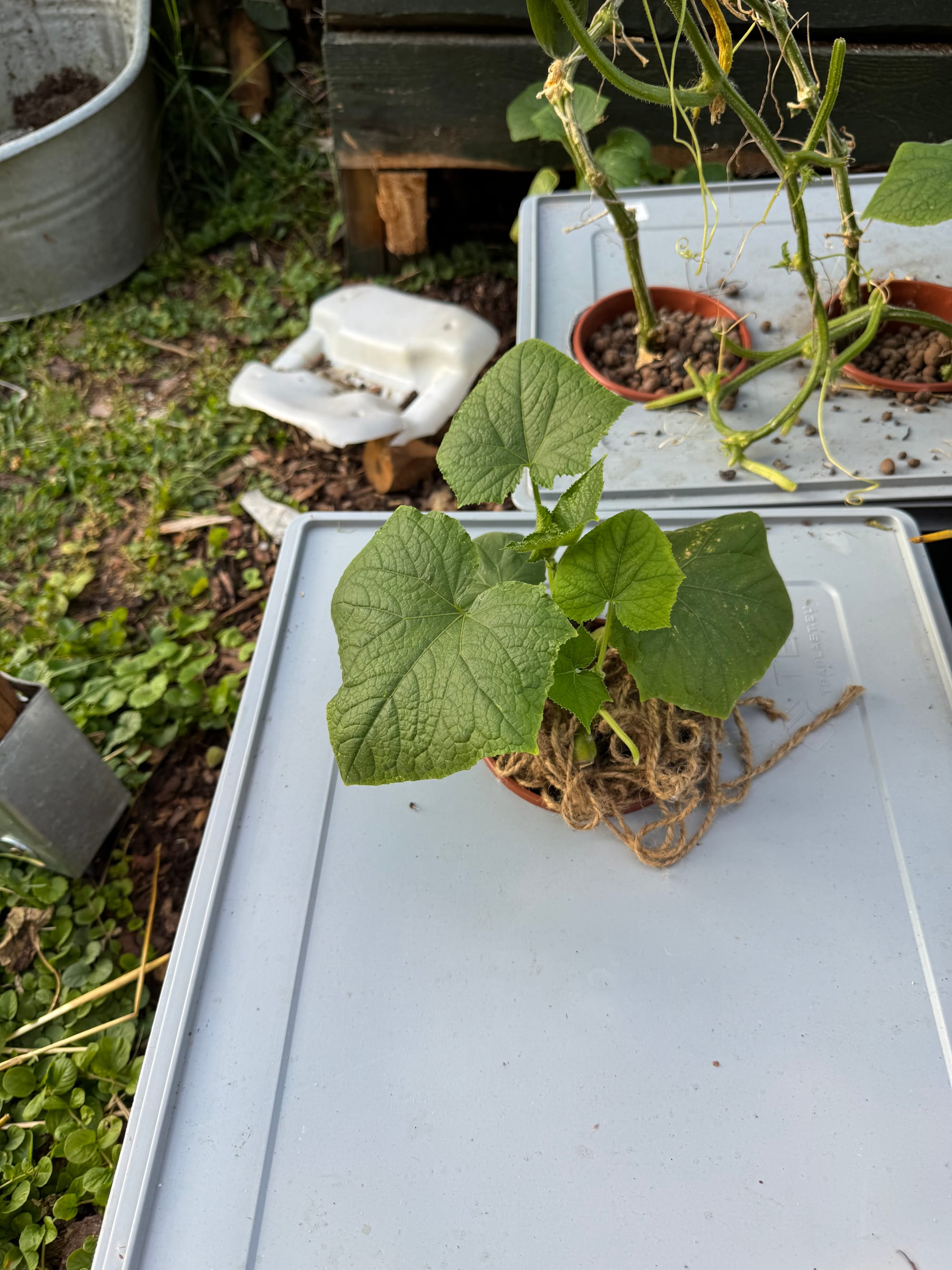
oxy-Kratky (left) vs. regular Kratky (right), same day
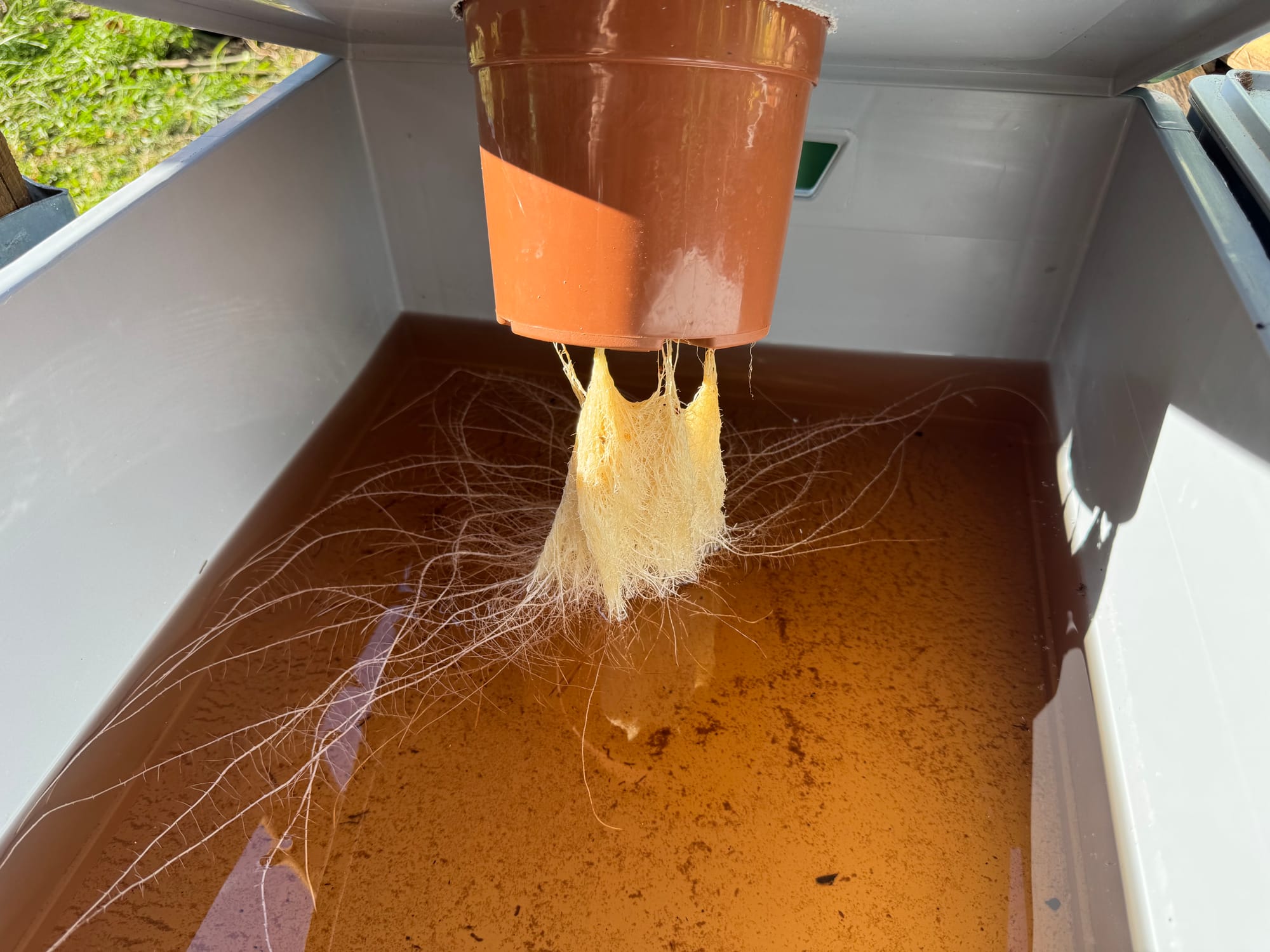
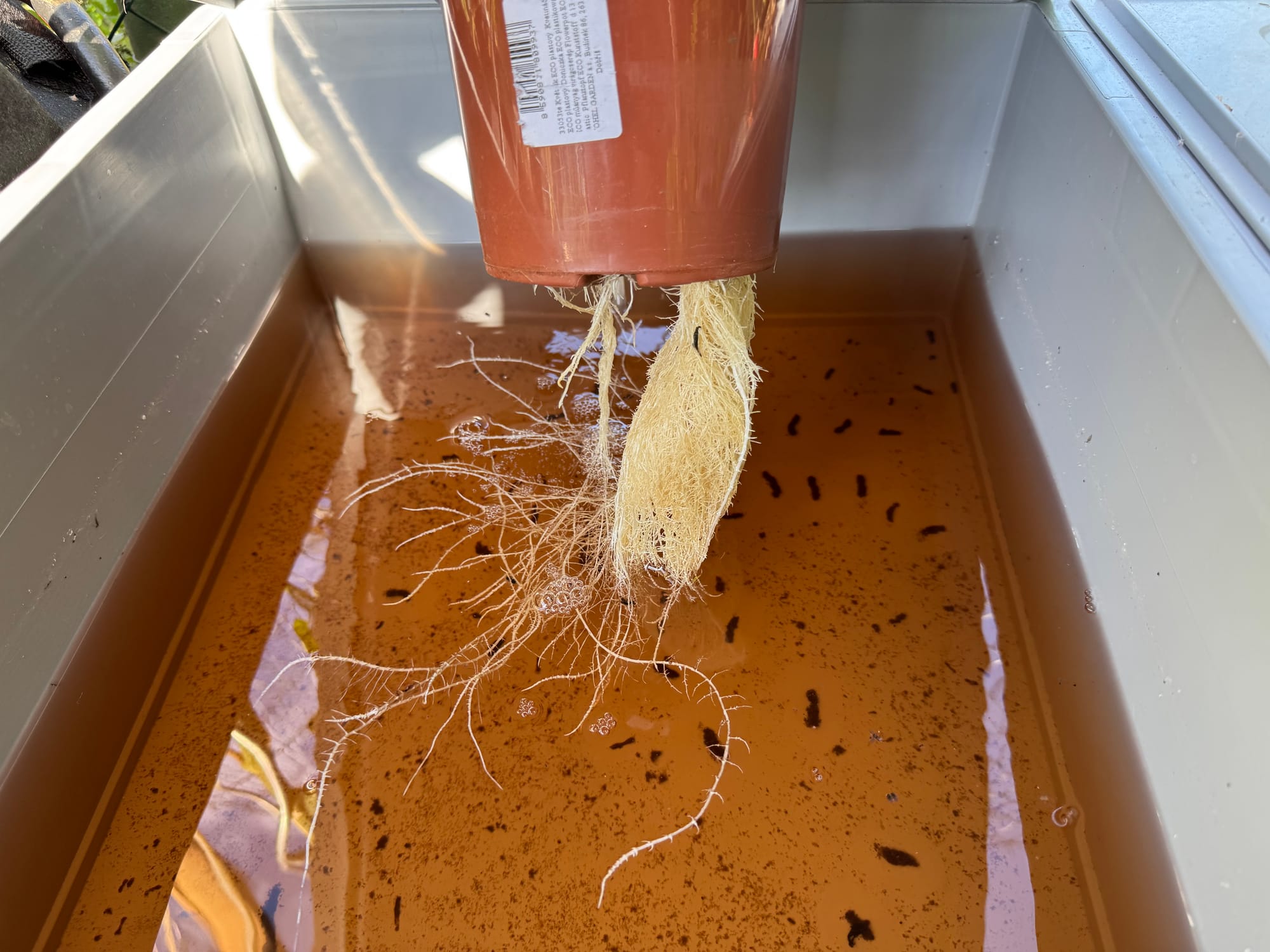
Regular Kratky roots (left) vs. oxy-Kratky roots (right)
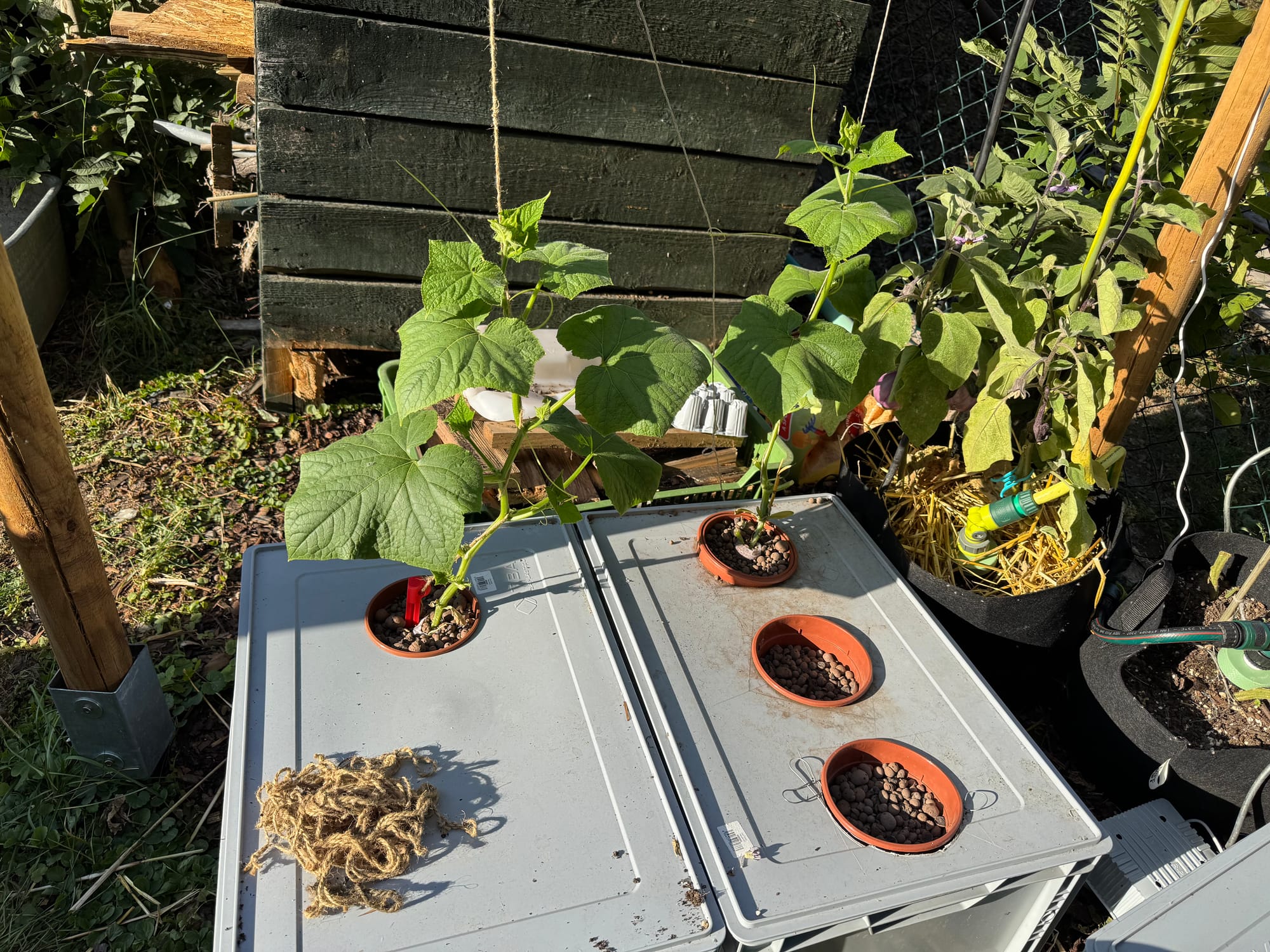
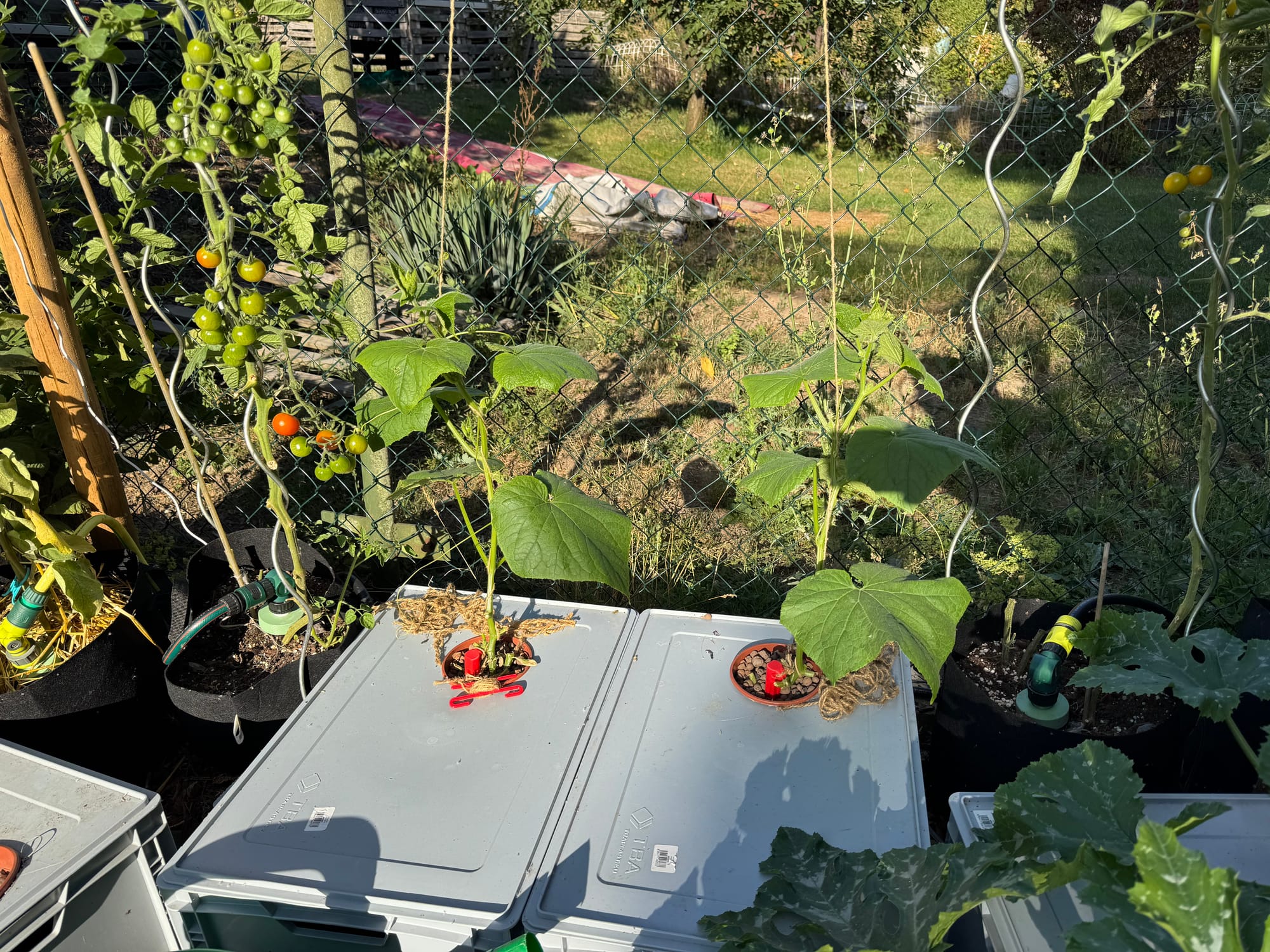
The hydroponic zucchini is getting out of hand. I am glad I opted only for one plant per box, but I should have placed the hole in the middle. No harm done, the roots are not complaining, and I really want to see them take over the whole box.
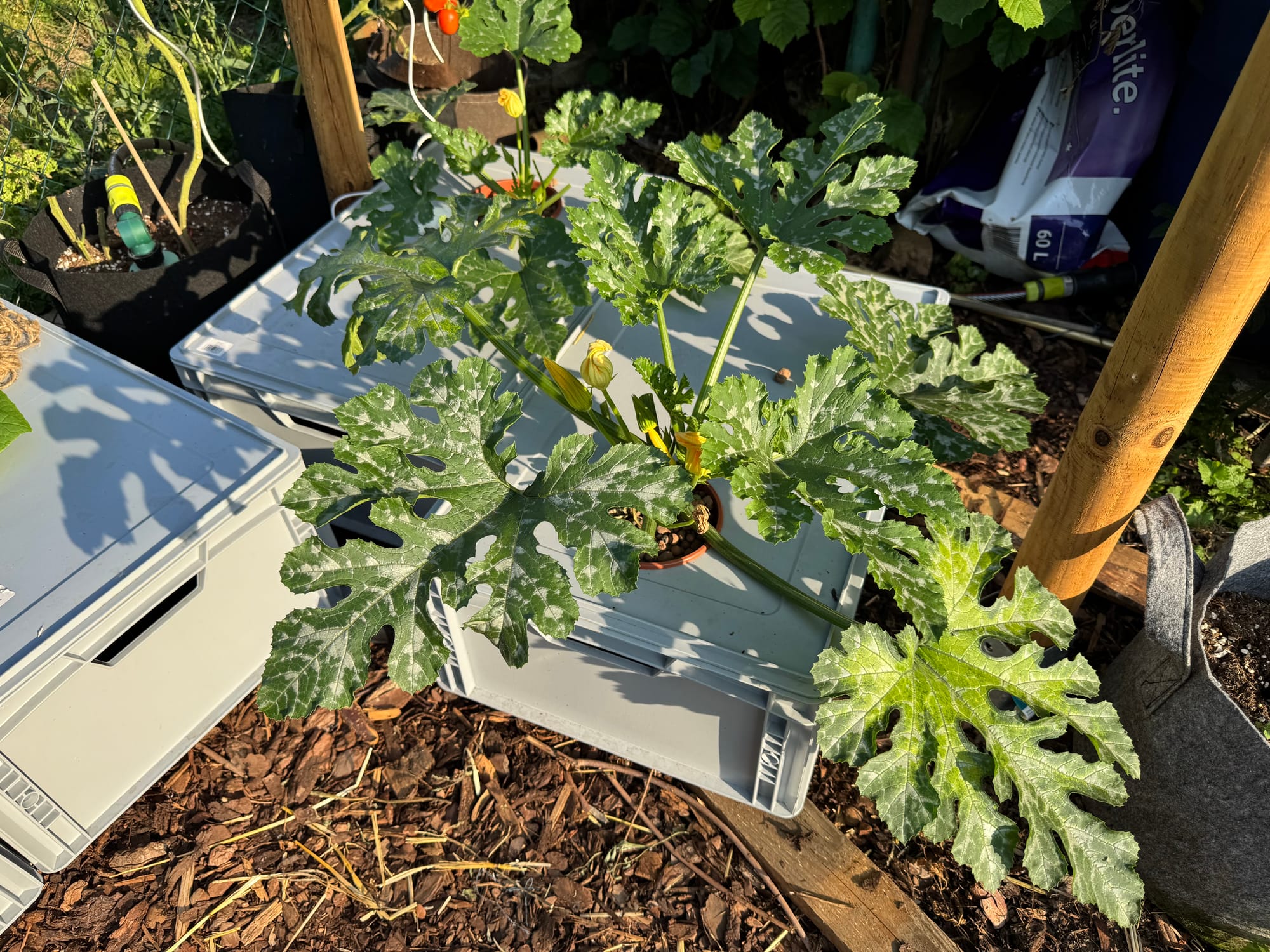
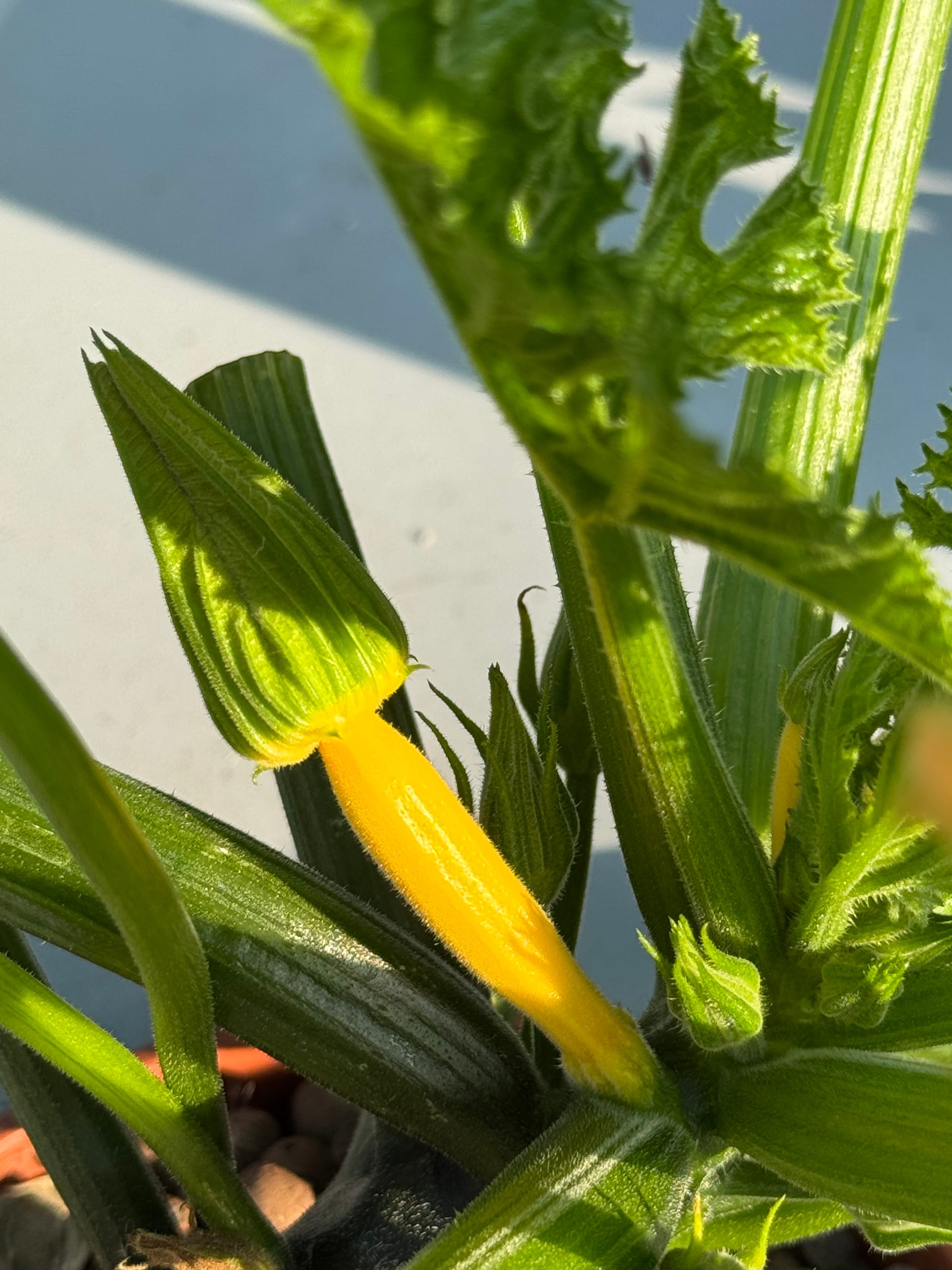
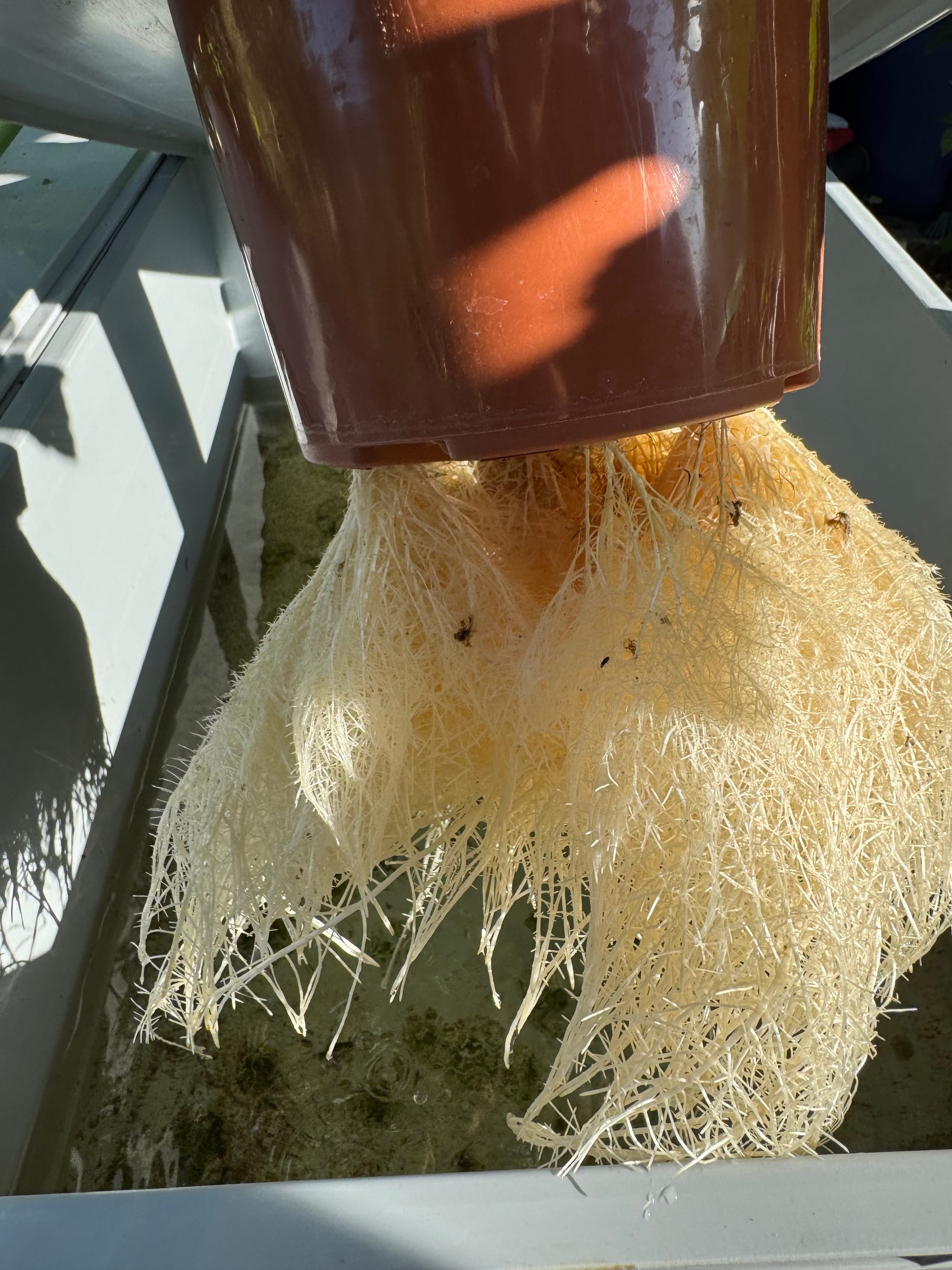
Both are setting fruit by the middle of August, and I was able to harvest one right before my departure. And I had to stunt the growth a little bit by crippling each plant a little bit. I still think it’s not enough, and I will return to absolutely humungous plants unless the powdery mildew eats half of them.


the final stretch
No matter how hard I cope, the end of the season is approaching. There is no denying that. That means late-season crops! This year I’ve decided to grow some fennel. That weird Italian crop you don't necessarily like, nor dislike, but it’s always somewhat pleasant in the stew. It’s actually a great late-season crop because everything hates fennel. It releases some nasty stuff into the soil that bothers everything around it. You either need a separate bed for it, or you grow it so late in the season that the plants in the vicinity don’t give a fuck anymore. And this year, the crop that has to give zero fucks is the beet. I pulled out one of the pickling cucumber beds and placed some fennel seedlings in there.
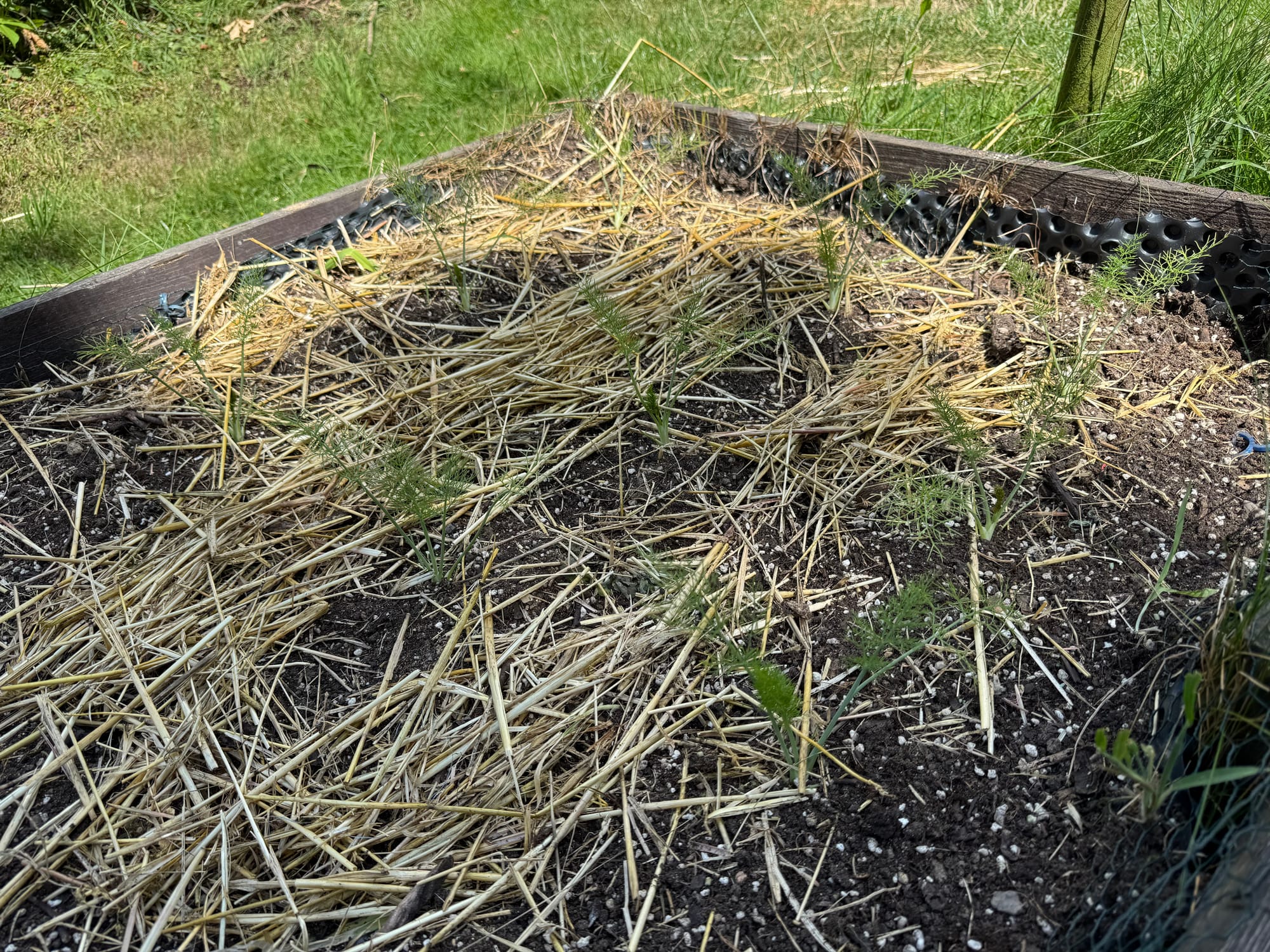
By the way, I totally forgot to prepare kohlrabi seedlings this year, my plans to have an early fall harvest of kohlrabi went through the chimney, and I’ve replaced the old batch of lettuce with fresh seedlings of, surprise, more lettuce. I’ve tried to calculate some stuff, and these should be ready just in time when I’m back.

And as a cherry on top, when I was leaving, I pruned and trimmed the only thriving instance of melons, the Banana melon growing right under the banana plant, call that an irony or something. There are something like three melons with a chance of reaching maturity. It’s not an outstanding result, but compared to the previous years, I am tripling the production basically! In a corporate culture, this would be called “an unprecedented success in financial gains”. One could get a pointless title on Slack for that! I only hope for one or two sweet melons.
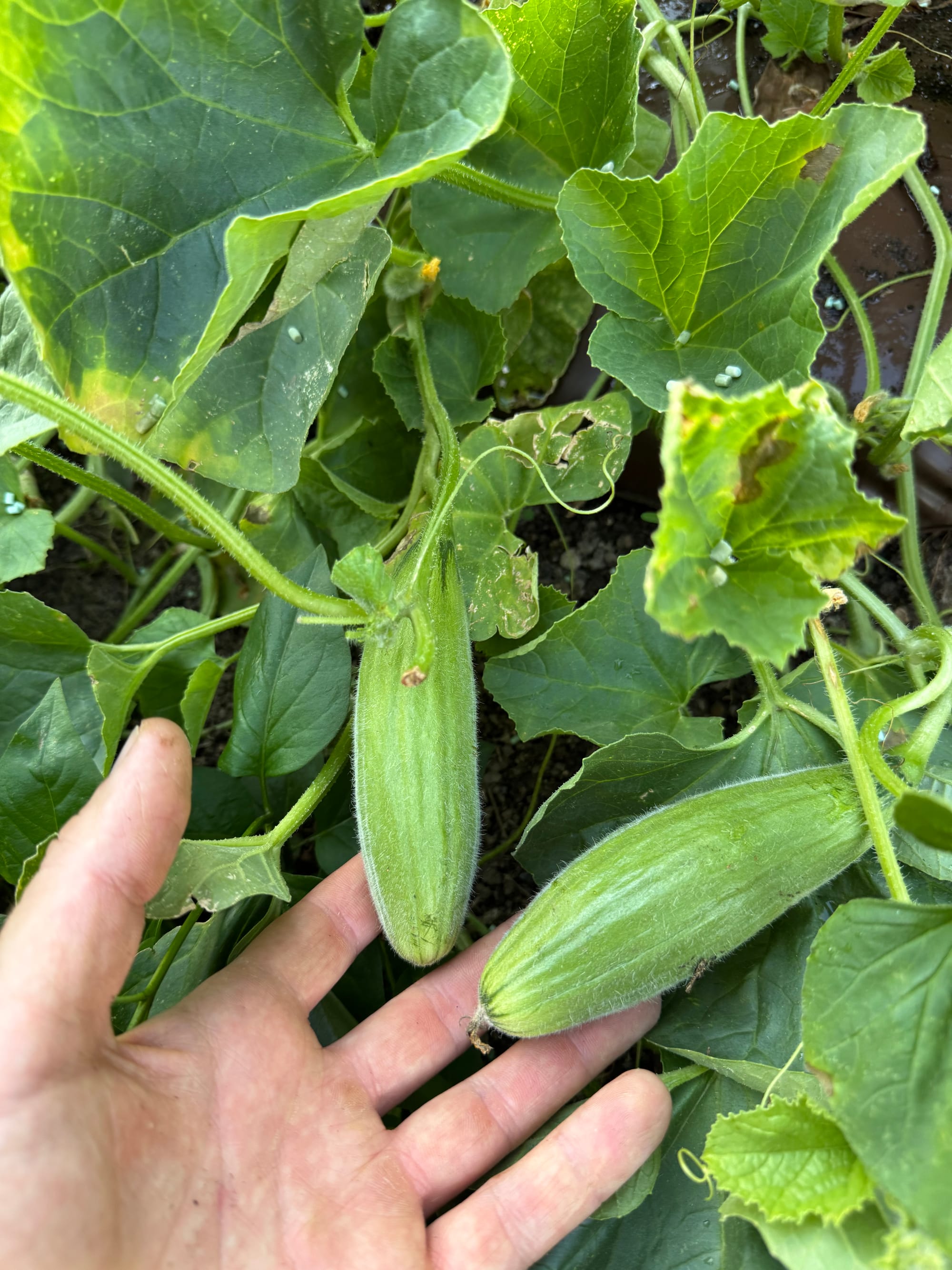

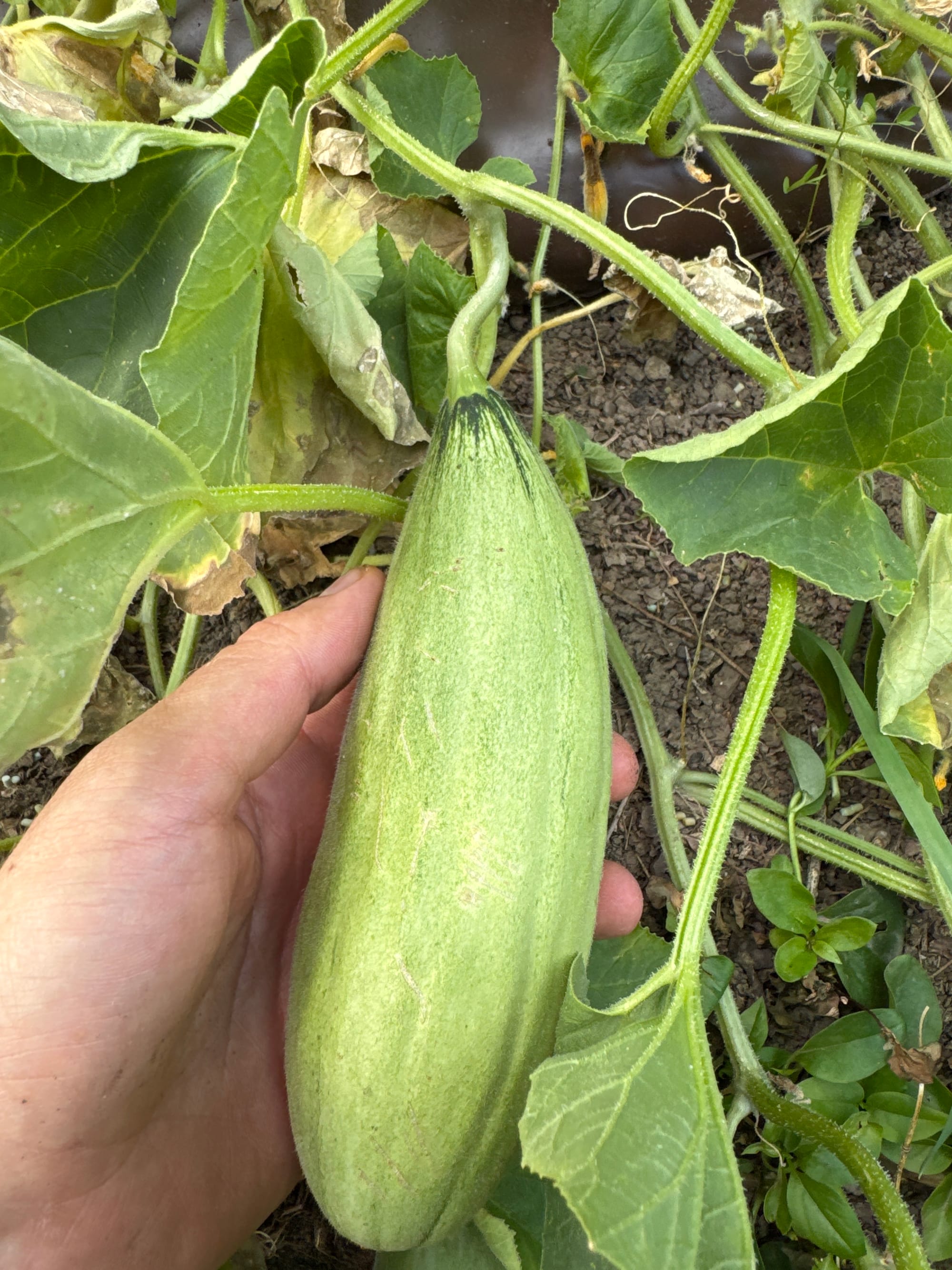
And one last tip for you. A hack for your #upcycling hashtag. Over the years, I’ve collected a bunch of empty jugs from fertilizers. While I was watching some quality content on Dr. Bernard Kratky’s YouTube channel, I noticed a simple watering drip-jug device. Basically, a drip jug is just a jug stabbed with a dripper.

I fitted the jug with a float valve connected to a larger barrel to keep the level. This way, the level in the jug and the hydrostatic pressure stay the same, and you get a consistent dripping rate. But you can also just use the jug as a KISS watering device. I will try to explore this area more next year. But save yourself some money and get as cheap drippers as possible. I made the mistake of investing money into expensive drippers only to brew disappointment a few years ago.
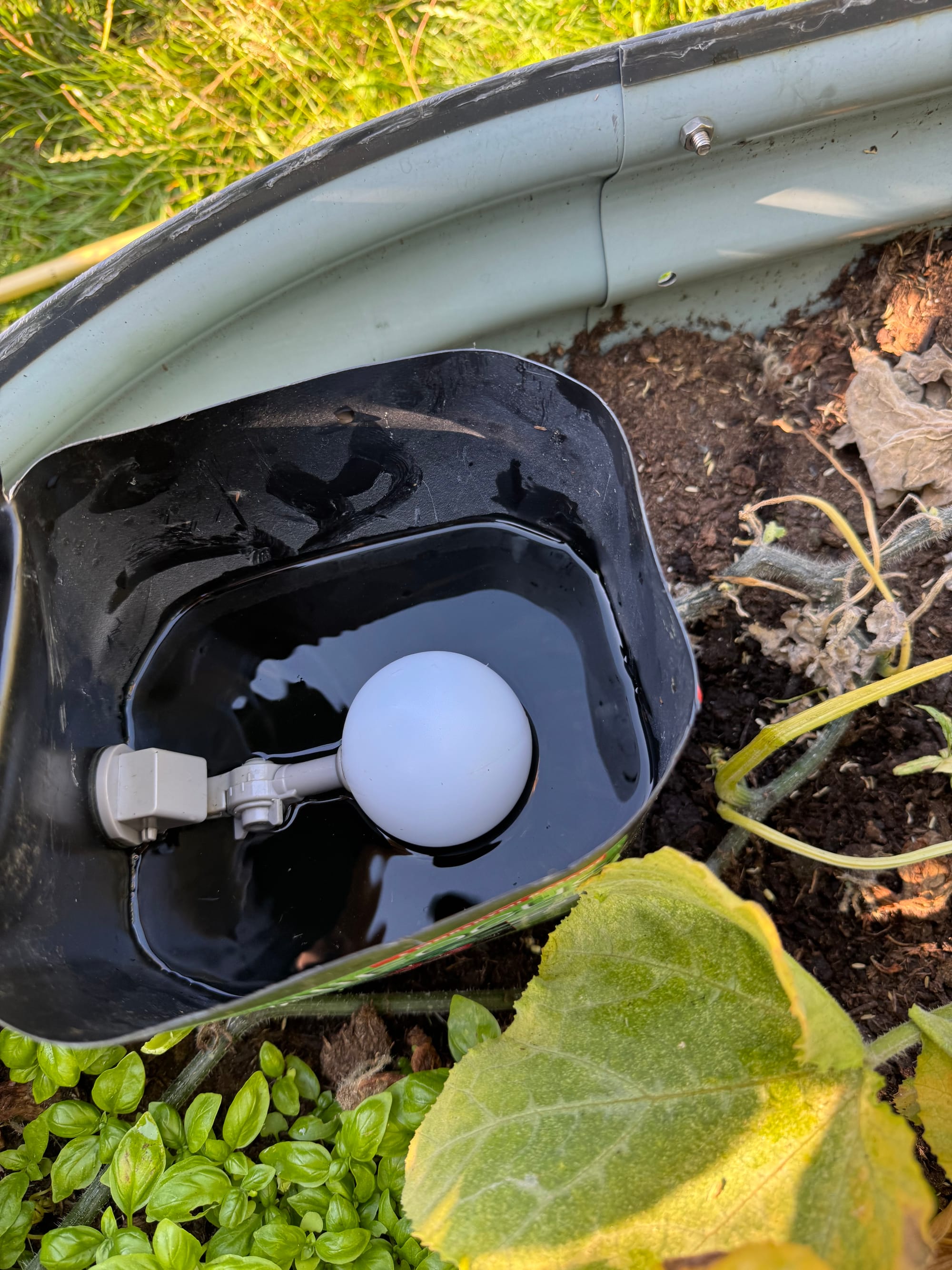
You might notice that I lack the quantity and quality of the photographic material in the update here. Initially, I was planning to merge the August update with the September update, as I did last year. But I got some suggestions later that the post would be too spread out, and I forgot to take a picture of everything in time.
You see, the monthly posts are a traditional long-form content. While I value the good old-fashioned attention span, there is no denying that these posts take not only my energy to compose every month, but they also require non-trivial energy to finish reading them. I will try, that’s the critical word, “try”, to optimize the content of these posts in a way that’s more comfortable to consume and produce. In simpler terms, I aim to create multiple posts over a month instead of one lengthy post. Is it going to work? The heck I know, but it’s my blog and I can do whatever I want with it. My only hope is that you'll like it.
Member discussion